DES GUITARES (et basses) ET DES FEMMES
Page 1 sur 1
 DES GUITARES (et basses) ET DES FEMMES
DES GUITARES (et basses) ET DES FEMMES
L'ÉCOLOGIE ACOUSTIQUE A-T-ELLE DÉTRÔNÉ LA FÉE ELECTRICITÉ ?

Patlotch a écrit:c'est grâce à la générosité de mon ami Stanislas Brownque j'ai pu me procurer l'intégralité de l'article en-bas, réservé aux abonnés du Monde. J'en prends prétexte pour ouvrir un nouveau sujet pour des thèmes guitartistiques qui n'ont pas leur place dans les précédents
je ne discuterai pas les chiffres de vente des guitares "électriques" relativement aux "acoustiques" et ce pour deux raisons : il y a belle lurette que la guitare électro-numérique, prolongés d'effets en pédales, intégrés aux amplificateurs ou dotées de sorties Midi a remplacé la "guitare électrique" des rockers dont il est question dans cet article (voir en relation célébrations électriques). Il me semble aussi qu'il ne prend pas en compte la belle vitalité des différents courants dénommés Métalil ne me semble pas que ce genre polymorphe puise être taxé de "musique de vieux". Entendu le type de sons et de rythmiques dont on y jouit, faut-il y voir une nostalgie de l'usine chez les jeunes précaires ? En tant qu'héritant du rock, il a repris le niveau sonore assourdissant qui faisait danser et fumer les foules à partir de la fin des années 60, phénomène qui n' rien d'exclusivement musicalLe heavy metal est un genre de rock apparu au Royaume-Uni et aux États-Unis à la fin des années 1960. Cependant, le terme de « heavy metal » est sujet à confusion car il peut prendre plusieurs sens différents selon le contexte dans lequel il est employé. Dans un contexte original, il fut utilisé comme un synonyme de hard rock. Dans un second sens, le terme désigne le heavy metal traditionnel, une tendance esthétique plus radicale qui, au cours des années 1970 et 1980, s’est démarquée du hard rock, en s’éloignant de ses racines blues, même si cette distinction est contestée par des recherches récentes. Dans un sens large et généralisé, le heavy metal ou metal (tout court) désigne toutes les musiques qui descendent du heavy metal traditionnel et du hard rock.
Dans le cadre de cet article le terme heavy metal est employé dans son sens large. En ce sens, il est aussi communément appelé metal. Le heavy metal puise son inspiration, entre 1969 et 1974, dans des groupes de hard rock qui, en combinant blues et rock, ont créé un hybride aux sonorités lourdes et épaisses, centré sur les impulsions de la batterie et de la guitare à la distorsion très amplifiée. Au fil des années, le heavy metal a donné naissance à des sous-genres variés. Le genre s'est popularisé dans les années 1970 et 1980, au fur et à mesure de l'apparition de ses sous-genres, et il génère toujours dans les années 2000 un fort engouement de la part de ses fans à travers le monde.
Black metal • Dark metal • Death metal • Death metal mélodique • Doom metal • Folk metal • Funk metal • Glam metal • Grindcore • Heavy metal • Latin metal • Metal alternatif • Metal avant-gardiste • Metal chrétien • Metal extrême • Metal gothique • Metal industriel • Metal néo-classique • Metal progressif • Metal symphonique • Metalcore • Nu metal • NWOBHM • Pop metal • Power metal • Rap metal • Sludge metal • Stoner metal • Speed metal • Thrash metal • Viking metal, etc.
et puis c'est ce week-end la grand'messe, comme on dit foire en allemand, du commerce mondial de la guitare à Osaka. Les magasins de zique au "Quartier américain" comme disait mon beau-père, quelle folie !
"My Top 10 japanese guitarists (In my opinion)"
"My Top 5 Female Japanese Guitarists"
depuis une vingtaine d'années, les guitares qu'on appelait "sèches", incluant les "classiques" et les "folks" se sont dotées de systèmes d'amplification de plus en plus sophistiqués, et même les meilleurs grands luthiers proposent leurs modèles avec cet équipement > guitares électro-acoustiques
La guitare électrique n’est plus branchée
Le Monde 10 mai 2019
Le Monde 10 mai 2019
L’instrument, symbole du rock et de la musique en bande, ne fait plus rêver ni vendre. Il incarne aussi un virilisme passé de mode.
La guitare ne me démange plus. Et ce triste constat s’affiche sur les murs de mon salon, où s’alignent sagement, en batterie de cuisine, une Fender Jaguar, une basse Précision de 1972, une Hofner Viola et deux acoustiques, une Takamine de 1981 et une Martin en matériaux recyclés. Les experts apprécieront…
Je les empoigne encore de temps à autre, mais seulement pour les épousseter et vérifier que leurs cordes encrassées sont définitivement inaccordables. Je ne conserve de mon lointain passé de guitariste qu’un médiator glissé au fond d’une poche, au cas où le virus me reprendrait. Et tout cela n’aurait aucune importance, si j’étais seul au monde. Mais le phénomène est général.
Une musique de vieux
Le Washington Post le signalait en 2017 en titrant sur « la mort de la guitare électrique ». L’instrument fétiche des années 1960 et 1970 ne fait plus recette et la mention de Jimi Hendrix, Eric Clapton, Jeff Beck ou Jimmy Page auprès des moins de 30 ans suscite une réponse embarrassée : « Ils jouent dans quel club ? » Comme le chantait Bob Dylan (note aux moins de 35 ans : Prix Nobel de littérature, mais aussi musicien à succès jadis), les temps changent.
La guitare électrique est passée de mode parce que la musique a évolué et que le rock, qui en avait fait son arme de guerre, est une musique de vieux. C’est ce que pense une autre superstar du genre, Paul McCartney (bassiste d’une formation de musique rythmée du nom de Beatles). « Aujourd’hui, c’est la musique électronique qui est en vogue et les gamins écoutent d’autres sons. Ils n’ont plus de guitar hero comme vous et moi », expliquait-il au Washington Post.
Merci Sir Paul pour ce rappel historique. Et un peu convenu. Parce que ce n’est pas si simple. Si la guitare électrique est en perte de vitesse, ce n’est pas le cas de l’acoustique, dont les ventes en 2010 ont dépassé pour la première fois celles de sa version électrifiée, peut-être grâce au succès de la chanteuse Taylor Swift. Ce regain correspond aux tendances musicales et au retour en grâce du folk, dont la guitare sèche est le véhicule, mais aussi à un changement d’attitude : la création musicale est passée du mode collectif (le groupe) au mode individuel (le DJ, le MC), en même temps que le mot « chanson » disparaissait du vocabulaire des gamins mélomanes au profit du mot « son ».
« Aujourd’hui, l’instrument de musique numéro un, c’est l’ordinateur. Les ventes de tous les instruments physiques sont en baisse » Eric Scotto, patron de Scotto Musique
Les papys du rock, restés branchés aux amplis à lampes, Eric Scotto les connaît bien : « Ils constituent un tiers de ma clientèle », explique le patron de Scotto Musique, l’enseigne qui vend des instruments à Marseille depuis 1921. En trois générations, les Scotto ont vu passer toutes les modes musicales du siècle, et le petit-fils du fondateur replace le déclin de la guitare électrique dans celui de la musique instrumentale dans son ensemble : « Aujourd’hui, l’instrument de musique numéro un, c’est l’ordinateur. Les ventes de tous les instruments physiques sont en baisse et la moitié des magasins de musique ont fermé en vingt ou trente ans », note-t-il, alors que le chiffre d’affaires annuel du secteur stagne à 475 millions d’euros (« Moins que les fers à repasser ! »).
Et même si les guitares constituent encore la moitié de ses ventes, l’électrique souffre, selon Eric Scotto, de ce handicap générationnel : « Au contraire de la guitare acoustique, c’est un instrument qui ne se joue pas seul, mais en groupe, et l’on assiste en ce moment à une forte individualisation de la pratique musicale. Les groupes, c’est mort. Et la guitare électrique meurt avec eux. » La vente d’instruments sur Internet, en augmentation constante, a d’ailleurs favorisé cette individualisation. Mais même le jeu vidéo Guitar Hero, qui aurait pu relancer chez les plus jeunes le goût de la gratte bien baveuse en mode salon, s’est arrêté en 2011, faute d’adeptes.
Inventivité incroyable
L’instrument est la victime paradoxale de sa longévité. Les Gibson, Fender, Gretsch ou Rickenbacker (fameuses marques de guitare américaines) des années 1950 et 1960 sont les Stradivarius des temps modernes. Loin de se démoder, elles s’apprécient, et le marché de l’occasion se développe au détriment de celui des guitares neuves, jusqu’à constituer aujourd’hui un tiers des ventes.
Par ailleurs, constate l’Egyptien Talaat El Singaby, qui organise depuis vingt-trois ans le festival des Internationales de la guitare à Montpellier, l’époque, dans ce domaine, est au multilatéralisme : « L’Afrique et l’Amérique latine, mais aussi l’Asie, font preuve d’une incroyable inventivité en matière de création d’instruments à cordes pincées électrifiées, qui sont aussi des guitares électriques. Il n’y a plus d’instrument dominant, mais une multitude d’instruments originaux. » Malheureusement, déplore-t-il, cette diversification laisse de côté la moitié de l’humanité : « Il y a très peu de femmes qui jouent de la guitare électrique. C’est un instrument qui nécessite une certaine forme de brutalité et qui est presque exclusivement masculin. »
Observatrice des rapports de genre, l’auteure (et chroniqueuse de « L’Epoque ») Maïa Mazaurette se souvient des outrances de Slash, le guitariste des Guns N’Roses : « J’étais adolescente pendant ses heures de gloire et c’était impossible de ne pas se demander : quel genre d’homme a besoin de DEUX pénis ? » Le recul nous permet de l’affirmer – et bien sûr il y a des exceptions –, le rock est/fut une musique de mecs, limite macho.
Et la guitare, brandie fièrement entre les jambes, est/fut l’étendard de ce virilisme. Lorsque, en 1969, Jimi Hendrix torpille l’hymne américain en imitant avec sa Strato le bruit des bombardements de l’US Air Force au Vietnam, il fait certes acte de rébellion, mais confirme que la guitare électrique est une arme par destination.
Bastion du sexisme
Sa version acoustique, en revanche, pose ses formes épanouies sur les genoux, se câline, se caresse et se cajole. Le son en est moins strident, plus rond, plus chaud. D’où la tentation de la réserver aux jeunes femmes. En 2008, une étude de l’International Journal of Musical Education concluait que les filles prédominaient dans la pratique de la harpe, de la flûte, du hautbois et du violon, alors que les garçons étaient largement majoritaires à jouer de la guitare et de la basse électriques, du tuba, de la batterie et du trombone. A elles les instruments aigus et légers, à eux les instruments graves et sonores.
La guitare électrique au service du patriarcat ? Il n’y a qu’une frette que nous franchissons allegretto en estimant que son déclin peut aussi s’envisager comme un reflet de la génération #metoo. Le rock’n’roll a eu beau prétendre promouvoir la libéralisation des mœurs, il perpétuait souvent les schémas selon lesquels, au XIXe siècle, on poussait les jeunes femmes vers le piano, qui se joue jambes serrées et dos droit, plutôt que vers le violoncelle, au maniement jugé plus équivoque. Pour celles qui s’en sont emparées comme on conquiert un bastion du sexisme, la guitare électrique a pourtant pu devenir un instrument de libération.
Ainsi, c’est une femme, Sister Rosetta Tharpe, qui fut parmi les premières à jouer le blues à la guitare électrique, dès 1938, et utilisa des techniques comme la distorsion.
Dans sa poignante autobiographie De fringues, de musique et de mecs (Buchet-Chastel, 2017), Viv Albertine évoque la transgression que représenta pour elle en 1977 le choix de cet instrument. Elle ose à peine s’en ouvrir à son compagnon d’alors, le guitariste des Clash, Mick Jones. Avant de se jeter à l’eau et de lui annoncer qu’elle veut devenir guitariste.
« Pendant une courte seconde, l’infranchissable rideau de fer des conventions s’est entrouvert, craquelé, et si j’étais assez rapide et effrontée, j’allais peut-être parvenir à passer de l’autre côté avant que la brèche se referme. » La guitariste des Slits – littéralement « les fentes » – explique comment elle va alors chercher, dans la douleur, non pas à apprivoiser sa Gibson, mais à la placer au service de sa féminité. Pour créer de nouveaux sons, de nouvelles textures, un nouveau langage.
Malgré ces sursauts, brancher sa guitare dans un ampli surpuissant reste considéré comme un « métier d’homme », si l’on en croit le palmarès des 100 meilleurs guitaristes de tous les temps publié en 2011 par Rolling Stone, qui ne comprend que deux femmes – Joni Mitchell et Bonnie Raitt –, ou celui établi un an plus tard par les lecteurs de la revue Guitar World et qui n’en compte aucune !
Un modèle pour Taylor Swift
Pour Sophie Rosemont, auteure de Girls Rock (NiL, 352 p., 20 €), dans le domaine de la guitare comme dans bien d’autres, les pionnières ont été oubliées par l’histoire officielle, c’est-à-dire masculine. Ainsi, c’est une femme, Sister Rosetta Tharpe, qui fut parmi les premières à jouer le blues à la guitare électrique, dès 1938, et utilisa des techniques comme la distorsion, sans lesquelles tous les guitaristes précités auraient peut-être opté pour le ukulélé. Rejetée de son vivant par les puristes et les bigots, la mère spirituelle de tous les guitar heroes n’a eu droit qu’à une reconnaissance tardive et posthume.
Les instruments pendus dans mon salon ne seraient-ils donc rien d’autre que de piteux trophées de chasse, témoins de la virilité déclinante d’un enfant du rock hors d’âge ? Encore un peu simpliste. D’abord parce que l’électro ou le hip-hop, fossoyeurs de la guitare électrique, n’ont pas brillé non plus par leur ouverture aux femmes. Mais aussi parce que, comme le démontrent Sister Rosetta Tharpe, Viv Albertine et leurs héritières, la femme, si elle est l’avenir de l’homme, voire l’avenir du rock (à en croire Kurt Cobain), peut aussi devenir celui de la guitare électrique.
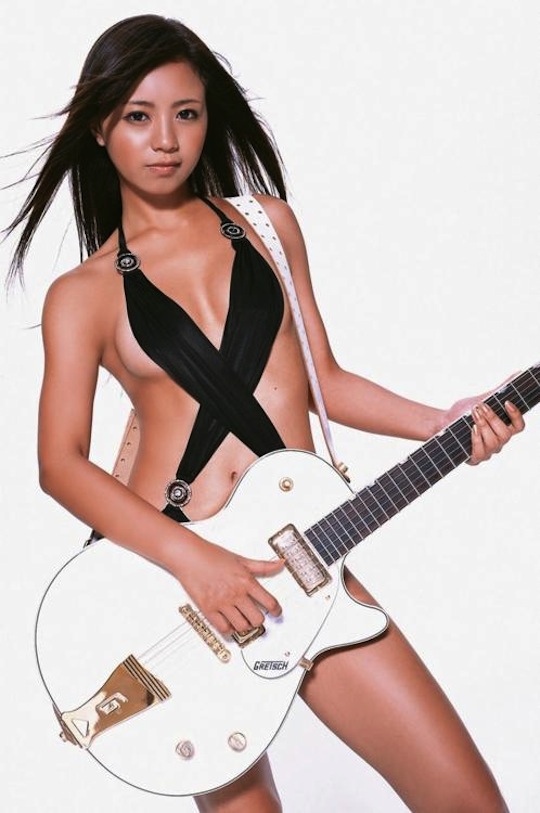
Dernière édition par Florage le Mer 15 Juil - 13:37, édité 2 fois
Invité- Invité
 Re: DES GUITARES (et basses) ET DES FEMMES
Re: DES GUITARES (et basses) ET DES FEMMES
GUITAR HEROÏNE ?
en passant par Jimi Hendrix,
pour finir sur le blues avec ORIANTHI,
Patlotch a écrit:il n'aura pas échappé à ma lectorate féministe que la gratte en matière de mise en avant sexuelle des courbes féminines, n'a rien a envier à la bagnole, ce qui en fait une caractéristique qui l'éloigne du vélo, avec lequel elle a de nombreux points communs depuis le 19e siècle, sujet sur le quel je reviendraiLa forme de la guitare rappelle, bien évidemment, celle du corps de la femme, ce que Gerardo Diego ne manque pas de souligner dans « Cuadro », poème créationniste où il décrit un tableau cubiste représentant une nature morte à la guitare. Le poète ne révèle pas sa source mais l’épigraphe, « À Maurice Raynal », renvoie à l’ami de Picasso, critique d’art et collectionneur averti, grand défenseur du cubisme à une époque où cette nouvelle esthétique était encore décriée. La guitare occupe le centre du poème, de la même façon qu’elle occupe sans doute le centre du tableau :
Enmedio la guitarra
Amémosla
Ella recoge el aire circundante
Es el desnudo nuevo
Venus del siglo o madona sin infante
Au milieu la guitare
Aimons-la
Elle recueille l’air alentour
Elle est le nouveau nu
Vénus du siècle ou madone sans enfant
De pleurs et de sang : corps et désaccords de la guitare chez six poètes espagnols de 1927
(R. Alberti, D. Alonso, L. Cernuda, G. Diego, F. G. Lorca et E. Prados)
Anne Lacroix, Fabula, 16 décembre 2015
Picasso 1915
Femme à la guitare assise dans un fauteuil
crayon sur papier, 29.8 x 19.8 cm
j'ignore quelle est la part de l'image d'un corps de femme à l'origine de la forme de la guitare. Historiquement l'existence de l'instrument comme tel date du seizième siècle avec la guitare baroque, avec des courbes moins prononcées
Femme jouant de la guitare
Johannes Vermeer, vers 1672
ce n'est qu'au début du 19e siècle qu'elle prend la forme qu'on lui connaît aujourd'hui
guitare Antonio de Torres, 1952
l'énigme est totale mais libre l'imagination
rien à voir avec le genre grammatical puisque le violon y eut droit aussi
Man Ray, Violon d'Ingres, 1924
Georges Clinton et sa Stoneman nude girl guitar,
mise au enchères à partir de $2,499
ni l'humour ni l'art n'ont toutefois leur place, mais seulement le cul, quand il s'agit de mettre en avant des femmes pour vendre, des voitures...
ou comme on l'a vu plus haut, des guitares
la musique va avec, comme en témoigne le chanteur britannique Jack Bugg, le « nouveau petit prodige folk de la scène anglaise » (Le Parisien, janvier 2013)...
suffit pas de tenir sa guitare en frimeur sexy pour en tirer de la musique...
Voodoo Chile paraît en 1968 sur l'album Electric Ladyland, The Jimi Hendrix Experience parue, remarquables 15 minutes, pour l'essentiel une improvisation sur le blues
restait plus qu'à... chercher la femmeOrianthi Panagaris ou Orianthi, née le 22 janvier 1985 à Adélaïde est une guitariste de nationalités britannique et australienne. Son style est souvent comparé à celui d'autres virtuoses tels Joe Satriani, Steve Vai, Eddie Van Halen ou Carlos Santana. Orianthi a été la guitariste de Michael Jackson lors de la préparation de sa tournée This Is It qui n'a pas eu lieu à cause de la mort du chanteur.
vous en reprendrez bien une couche ?Quelle a été votre expérience en tant que joueuse féminine? Ça a été dur ? Avez-vous été accepté ?
Tu as toujours le "Oh, c’est une fille, c’est pour ça qu’elle attire l’attention." J’ai l’impression d’être jugée plus comme un joueur féminin, parce que c’est initial : "Portez-vous juste la guitare comme un accessoire ?", ce genre de chose. Vous devez prouver un peu plus, c'est ennuyeux.
Il faut arrêter de penser à ça, c’est ce que je devais faire. Il y a un moment, j'y pensais constamment, et que les gars se demandent, "Peut-elle vraiment jouer ? " Mais moi, j’aime juste jouer. Vous savez, à la fin de la journée, nous ne sommes que des artistes qui essaient de s'exprimer, et ce n’est pas une compétition. Il ne s’agit pas de savoir qui peut jouer le plus vite. Tout le monde joue différemment. Si vous aimez ça, vous pouvez jouer un accord de A et dire avec ce que vous voulez.
Je pense juste que tout concerne la musique, avoir un amour pour quelque chose, quoi que tu fasses. Si ça arrive, c’est génial. Les guitaristes que j’aime entendre jouer le font avec beaucoup de cœur, Santana, Eric Clapton ou Jeff Beck, et vous pouvez juste dire qu’ils aiment ça. Quand ils ne sont plus sur la route, ils vont encore dans leur chambre jouer de la guitare.
J’aime jouer, vous voyez la foule qui entre dedans. Ils s’amusent, il n’y a rien de plus addictif que ça. Je ne veux plus penser à ce problème [d'être une femme guitariste], je suis juste un des gars, c’est comme ça que je le vois.
Vous êtes seulement guitariste, quoi que vous soyez d'autre...
Eh bien, vous savez, à l’école, j’ai eu du mal à être guitariste. C’est comme être une ballerine masculine d’une certaine façon. Ce n’est pas la norme, la guitare est définitivement un truc de mecs. Il y a tellement plus de gars que de filles qui jouent de la guitare. Mais en tournée étant la seule fille, je me considère comme l’un des gars. Jusqu’à ce que quelqu’un m’aborde comme, "Oh vous êtes ce guitariste poussin", et moi genre "Hum, je suppose que vous ne parlez pas de moi ?"
Interview Guitar World January 04, 2013
Invité- Invité
 Re: DES GUITARES (et basses) ET DES FEMMES
Re: DES GUITARES (et basses) ET DES FEMMES
pour la route
Joanna Connor (born August 31, 1962) is an American Chicago-based blues singer, songwriter, and virtuosa guitarist.
Connor was born in Brooklyn, New York, United States, and raised in Worcester, Massachusetts. After moving to Chicago, Illinois in 1984, she was drawn to the Chicago blues scene, eventually sharing the stage with James Cotton, Junior Wells, Buddy Guy, and A.C. Reed. By 1987, she had started her own band, and recorded her first album for Blind Pig Records in 1989
Invité- Invité
 Re: DES GUITARES (et basses) ET DES FEMMES
Re: DES GUITARES (et basses) ET DES FEMMES
ET L'HOMME NE PIPA PAS
Patlotch a écrit:des cordes, on en a plus ou moins à son arc, et ça commence par le luth monocorde des guerriers peuls ou la vièle monocorde des Touaregs
le molo du griot Djibo Badjé, dit «Djéliba», chez les Zarma du Niger. Source
écouter Kamarel, le virtuose du Molo (luth à corde unique)
mais enfin, vous me direz que ce ne sont pas les femmes qui jouent de cet “instrument du diable” utilisé traditionnellement pour les danses de possession, et popularisé dans le monde par Ali Farka Touré. Franchissons donc quelques mers pour découvrir Liu Fang, virtuose d'un instrument traditionnel chinois, dont le jeu ferait pâlir de jalousie les trémolistes classiques autant que ceux incapables d'imaginer la violence d'une guitare sans l'électricitéLe pípa (chinois : 琵琶 ; pinyin : pípa) est un instrument de musique à cordes pincées traditionnel chinois de la famille du luth. Cet instrument apparaît pour la première fois dans des textes datant du IIe siècle av. J.-C. La forme dérivée japonaise s'appelle le biwa.
C'est un instrument à quatre cordes (originellement en soie, actuellement généralement en métal) dont la caisse taillée dans un bloc monoxyle de bois dur est en forme de poire aplatie, portant souvent gravés dans le dos, des bas-reliefs, ou des incrustations de nacres. Son manche très court se termine par un chevillier courbé. Il compte 30 frettes qui couvrent une partie de la table d'harmonie et offrent ainsi une grande étendue.
A sa création, il existait deux types de répertoires : le wen et le wu. Le wu correspond au répertoire martial soit la tradition épique qui met en scène des épisodes historiques, notamment les batailles. Dans ce cas, le jeu crée des bruitages et des effets sonores qui suggèrent les combats, la mêlée des chevaux, le froissement des armures ou le choc des épées.
Le répertoire « wen » se réfère à des thèmes lyriques communs à la poésie et la peinture. Dans ce cas, l’interprétation, les silences et les nuances tonales requièrent une subtilité et une sensibilité toute particulières.
une vidéo où l'on peut apprécier particulièrement la technique de main gauche à partir de 7:25JAZZ ON PIPA ?
quant au biwa japonais, il est plus particulièrement recommandé à ceux (et celles) qui ont peur de perdre leur médiator
Invité- Invité
 Re: DES GUITARES (et basses) ET DES FEMMES
Re: DES GUITARES (et basses) ET DES FEMMES
Christel & Trisha, 7 Strings
groupe de Metal OMORFIA, All Female Band from Cavite, Philippines

Invité- Invité
 Re: DES GUITARES (et basses) ET DES FEMMES
Re: DES GUITARES (et basses) ET DES FEMMES
réservé à notre lectorate anglophone
Los Angeles-based singer and songwriter, Leah Capelle, is all about the female psyche, especially positive body image, self-acceptance, identity and empowerment. All of these elements are prevalent in her new single, “Settle Down,” along with her new EP, Giants, produced by Grammy-winning producer, Jeff Bova. “Settle Down” is an ode to her growth as female musician coming into her own and being comfortable in her own skin, and offering no apologies.

Leah Capelle, Photo by Conner Coughenour
Leah Capelle: A conversation about body positivity, self-love and identity
Lindsey Borders, Guitar Girl Magazine, May 8, 2019

Lindsey Borders, Guitar Girl Magazine, May 8, 2019

Los Angeles-based singer and songwriter, Leah Capelle, is all about the female psyche, especially positive body image, self-acceptance, identity and empowerment. All of these elements are prevalent in her new single, “Settle Down,” along with her new EP, Giants, produced by Grammy-winning producer, Jeff Bova. “Settle Down” is an ode to her growth as female musician coming into her own and being comfortable in her own skin, and offering no apologies.

Leah Capelle, Photo by Conner Coughenour
On the “Settle Down” video, Capelle states in a general press release: “The official video for ‘Settle Down’ was a highly creative process involving lots of different brains, and I’m so proud of how it ties into the very emotional and honest lyrical content in the song. It is by far the most vulnerable piece of art I have ever created. The visual seeks to capture the aching, helplessness, and disillusionment I felt when I wrote the song. The paint cans each wear a controlling statement that has been imposed on me, though I believe them each to be relatable across the female experience. The paint itself is a metaphor for how obscured I felt at the time – and by having both faceless figures and my own hands push the paint onto my skin, it represents the blurring and obstruction of my genuine identity in place of a person literally dripping in the expectations of others. You are not alone!”
Originally from Chicago, Capelle’s music is a blend of alternative and pop, and she has been performing her music since she a young girl. She studied music at the Chicago School of Professional Singing, The North Shore Music Institute and Berklee College of Music. After completing her studies, she moved to Los Angeles to pursue her music career full-time, and is currently pursuing a B.S. in Music Business at USC Thornton School of Music.
Read on about this bright, enthusiastic, momentous musician who discusses important issues about self-reflection, influential female songwriters from the 90s and today, her pivotal single and video for “Settle Down,” and much more.
You’re very much into body positivity and self-love. Why are these aspects most important to you, and what do they mean to you?
I absolutely am, though I too have struggled with insecurities for most of my life. It’s no secret that the beauty standards forced on women have created an unhealthy environment for young girls to grow up in. We now live in a time where social media influencers have become the new celebrities – creating unrealistic beauty standards for most people. As individuals, we have a habit of broadcasting a highlight reel of our lives – only posting things that make us look hotter, cooler, more glamorous, more successful. The Settle Down video is an effort to combat those standards. I am not a size 2. I do not have perfect skin. I too have been told that I should wear more skirts, that I should take up less space, that I shouldn’t be so “me” all the time. And yet, I’m on camera almost completely nude for four and a half minutes showing my most vulnerable self. I think by normalizing what real people look like, and showing that being real is beautiful, we can create a more accepting space for women (and men) to exist and be ourselves!
You’re inspired by popular female songwriters from the 90s like Fiona Apple and Alanis Morrissette, along with today’s tastemakers, Phoebe Bridgers & Molly Burch. What about these women particularly inspire you; their writing, how they articulate themselves, etc.?
I’m constantly inspired by women in general – both those who came before me, and those who are my contemporaries. As for Fiona, Alanis, Phoebe, and Molly – these women are just unapologetically themselves. Morrisette’s Jagged Little Pill was a formative album for me, and is actually one of the reasons I started playing alternative rock music in the first place. Fiona’s quirky, poetic writing on piano influenced many of my songs in high school and early college. I became particularly obsessed with her song “Werewolf” when I got to Berklee and absolutely geeked out on the modulations and chord changes she utilizes. Recently, I’ve been really inspired by both Phoebe and Molly’s confessional way of writing. Each song feels like a journal entry that is both deeply personal yet still relatable as a listener. I strive to write music that so sincerely reflects who I am, but can still reach across the page and touch my audience.
Your latest single and music video for “Settle Down,” tells an important story and message, especially for women. What does this song mean to you, and what was it like filming the video for it?
This song marks the end of a very important chapter in my life. It’s fitting that the closing track on the giants EP, which I worked on for nearly two years, was written during a period of personal awakening and rebellion against the situation I was in. Settle Down is an intimate song for me to share – it’s a letter to myself, as I worked through the disillusionment I felt with my art – and myself – at the time. I couldn’t understand why I couldn’t live up to the expectations placed on me, whether by other people, or by myself. The video is a metaphorical representation of that feeling – with the paint representing the expectations, and the reverse motion of the video meant to show that those expectations were originally imposed by other people, but that I ultimately promulgated my own discomfort. Filming the video was terrifying, but I’m so proud of the way it came out. When I saw the first cut, I cried! It was risky to be so exposed and so emotionally raw on camera. I was worried that the nudity would be interpreted in a sexual connotation, but I’m overwhelmed with gratitude that the video has been received the way I intended and that people all across the world are connecting to it (smiles)
How would you describe your songwriting process? Do the music or lyrics come first, vice versa, or does it vary?
My songwriting process is very spontaneous. Sometimes I’ll pick up a guitar or sit down at the piano and noodle around until my hands find a part, and write the rest from there. Sometimes I’ll stream-of-consciously write a poem or set of lyrics into a journal and come back to the idea much later. Most often I’ll have a concept or emotion that I want to play with and the melody, lyrics and instrumental parts will all come together simultaneously. Lyrics definitely come the easiest to me out of all three elements – sometimes I find myself writing 6 or 7 minute songs because I have so much to say about a particular experience or feeling, that end up becoming two or three different pieces!
Do you play any instruments other than guitar, or are there instruments you want to learn how to play?
I’ve played both guitar and piano since I was very young. I would love to learn how to play drums and saxophone!! I also would love to become more proficient on bass. I can stumble my way through a song on bass, but having the dexterity and rhythmic knowledge of a bass player or drummer would be really fun.
Is an EP or album in the works? What’s next for you in 2019?
I’m currently in production on my first full length album set to drop in late August/ early September, so keep an eye out for that (smiles) There will be a series of singles beginning to drop at the top of the Summer! In the meantime, I have a series of shows booked for the next few months – April 17th at The Moroccan Lounge in Los Angeles, I’m co-headlining with some of my favorite fellow female artists. There will be 5 acts, and all of our sets will be intercut together as one seamless show, instead of openers and headliners. I will also be playing guitar in the band for many of the other acts! Super cool night sponsored by Play Like A Girl. I’m performing at Summerfest Music Festival in Milwaukee, Wisconsin at the end of June and am booking a midwest tour for the beginning of July. Follow my socials (@leahcapelle) for more info on those shows as they are announced!
Fun Questions
Who was your first concert, and who has been your overall favorite so far?
I believe my first concert was either The Backstreet Boys or Donny Osmond when I was maybe 6 or 7 years old. I can’t say I remember much about either show, but I know I went with my mom! This is a very hard question for me – seeing live music is what gives me life! One of the best shows I’ve seen in the last year was this Americana/Rock super-group called Glorietta. They sold out The Troubadour last fall and put on the most raucous, fun show I’ve seen in a long time.
What was your first album on cassette, CD and/or vinyl?
My first vinyl was handed down to me by my mother, and was CSNY’s greatest hits album titled “So Far.” The delicate nature of their harmonies with the political message of the music blew my 14-year-old mind, and I still get lost in that album every few months. The first CD that seriously meant anything to me was Counting Crows’ record “Films About Ghosts” (which is also a greatest hits album.) That record was the soundtrack to my high school experience, and features a number of my favorite songs of all time.
Which five albums and/or artists would you not want to live without?
Ooooo tough question… Top five desert island albums are probably:
22, A Million – Bon Iver
White Noise – Noah Gundersen
Choose Your Weapon – Hiatus Kaiyote
Lavender – Half Waif
Currents – Tame Impala
Which female artist(s) would you most like to collaborate with?
Oh gosh, there are so many!! A few would be St. Vincent, Mitski, Phoebe Bridgers, The Japanese House, Joni Mitchell, Bonnie Raitt, Sara Bareilles, Brittany Howard (from Alabama Shakes) … I could go on forever!
Do you have a guilty music or entertainment pleasure?
I’m a sucker for some well-made Top 40 pop music. I can’t get enough of Ariana Grande’s new album “Thank U, Next,” Dua Lipa’s self-titled record, or Taylor Swift’s “Reputation.”
Invité- Invité
 Re: DES GUITARES (et basses) ET DES FEMMES
Re: DES GUITARES (et basses) ET DES FEMMES
LA BONNE GUITARE N'A PAS DE GENRE
« J’ai l’impression d’être jugée plus comme un joueur féminin...
mais en tournée étant la seule fille, je me considère comme l’un des gars »
Orianthi, citée ici
Patlotch a écrit:j'aurais pu dresser ici la liste des "femmes guitaristes de jazz" comme un prolongement de mon sujet de 2013 la femme est l'avenir du jazz (Female Jazz Instrumentalists), vous reparler de Mary Osborne, Mimi Fox, et de la "pauvre" "défunte" "sous-estimée" Emily Remler, chez qui tout même les idées sauf l'addiction, ou vous présenter Mary Halvorson Best Guitarist 2017 in DownBeat International Critics Poll, qui à vrai dire m'ennuie profondément comme relevant d'un nouvel académisme néo-free-jazz, du revival qui n'arrive pas à la cheville de Derek Bailey, Fred Frith et autres vieux alors jeunesécouter ça comme c'est chiant
quoi qu'il en soit, je répugne à présenter des guitaristes-femmes comme d'autres ont déteste être catégorisé" écrivains noirs-américains. Il n'y a que l'ineffable bouffon Claude Guillon pour se revendiquer "écrivain-anarchiste", sans doute parce qu'il n'est qu'anarchiste mondain d'éditeurs anarchistes et médiocre écrivain, autant que piètre historien ("de la Révolution française"), pour lectorat éternellement infantile inutile et futile. À la différence d'authentiques artistes, femmes ou non, Claude Guillon veut « être jugé » comme un « écrivain anarchiste », ce qui relève du plus tardif gauchisme esthétique post-stalino-jdanovien et post-68 en même temps. Aragon ne supportait pas d'être appelé "écrivain communiste" et ses écrivains préférés ne l'étaient pas... Me viendrait-il à l'idée de me nommer "poète communiste" ? Quelle connerie !
comme les métaleuses-femmes m'emmerdent autant que les mecs à part quelques novateurs de génie (Steve Vai...) je continuerai donc à parler de femmes et guitare autrement, et puis on écoutera encore de la musique, par exemple sur 8 cordesHedvika Švendová a écrit:Thank You very much to "Nadace Život Umělce" for supporting my studies abroad.
Moc děkuji Nadaci Život Umělce za podporu mých studií v zahraničí.
Hedvika Švendová began playing the guitar at the age of 4 with her mother, Hana Švendová, and soon started to play piano, flute and violin also.
Later, she studied at the Elementary Art School in Choceň with Petra Poláčková and The Elementary Art School in Ústí nad Orlicí with Jiří Tomášek.
Between 2011 and 2017, she studied with Petr Saidl at The Pardubice Conservatory.
From her early childhood, Hedvika attended several master classes with the celebrated guitarists like David Russel, Aniello Desiderio, Alvaro Pierri and many more.
She is currently studying in the class of Judicäel Perroy at The “École Supérieure Musique et Danse Hauts-de-France-Lille”, with regular master classes of Carlo Marchione and Florian Larous.
Besides of receiving many prizes in guitar competitions, she is also a holder of some special awards, such as “The Young Talent”, awarded by the governor of the Pardubice Region, The Golden Nut award presented by The Czech Television and “Young Guitarist of the Year” Czech Republic.
Hedvika also plays flute. Between 2015-2017, she performed regularly with The Czech Chamber Philharmony Orchestra Pardubice.
Since 2011, she has received more prizes, including the 1st places at flute competitions in the Czech Republic and abroad.
She has played concerts at some of the major guitar festivals : Mikulov, Křivoklát (CZ), Forum Gitarre Wien, Rust (Austria), Lanckorona, Tychy, Žory (Poland), Chengdu (China), Ligita (Lichtenstein), Bratislava (Slovakia), Balaton (Hungary) and others.
Since 2011 she has been performing as a soloist with orchestras such as:
The Czech Philharmony Orchestra
The South Czech Philharmony
The Czech Chamber Philharmony Orchestra Pardubice
The Hradec Králové Philharmony Orchestra
The Chamber Orchestra of The City of Tychy.
The Anima Musicae Orchestra Budapest
Nowadays she plays her custom made 8 string guitar by Petr Matoušek.
[suit la liste impressionnante des prix de l'autre côté du rideau... de faire européen]
Invité- Invité
 Re: DES GUITARES (et basses) ET DES FEMMES
Re: DES GUITARES (et basses) ET DES FEMMES
un ajout en bas : Miles Davis interprétant ce standard.... au piano ! Un au milieu sur l'analyse du solo d'Emily Remler
TOUT DOUX, DANS LA LUMIÈRE DU MATIN
Softly As in a Morning Sunrise

Softly As in a Morning Sunrise

Patlotch a écrit:pour me faire mentir, je vais quand même, non vous parler, mais vous faire entendre, si vous l'écoutez, Emily Remler, dans l'interprétation d'un standard du jazz tiré de l'opérette The New Moon écrite en 1928 par Sigmund Romberg and Oscar Hammerstein. Son solo est extrait de l'album de 1988, “East to Wes”, un hommage à Wes Montgomery avec Hank Jones au piano, Buster Williams à la contrebasse et and Marvin Smitty Smith à la batterie. Il s'agit à l'origine d'un tango interprété par le Christopher Campbell
on peut le trouver ridiculement emphatico-romantique, mais cela donne une idée de l'ambiance, comme au demeurant le titre "Softly As In A Morning Sunrise", celui de ce commentaire étant ma "traduction" à quoi j'avais ajouté quelques paroles pour en faire une chanson dans le respect de l'esprit et du tempo. En effet je n'ai rien contre les reprises de standards s'éloignant même beaucoup des originaux, et celui-ci a donné des merveilles*
* exemples : en 1957 Sonny Rollins en trio au Village Vanguard avec Wilbur Ware et Elvin Jones, batteur qu'on retrouve avec le quartet de John Coltrane au Vanguard aussi en 1961 ; le Modern Jazz Quintet à diverses reprises : Alexandra Palace, London, 1982, etc.). Lester Young ou Tal Farlow disaient improviser en ayant les paroles en tête, mais d'excellents musiciens l'oublient complètement pour enfiler leurs perles habituelles sur la suite d'accords sans référence à la mélodie (Michael Brecker, Bireli Lagrene, John Scofield n'ont pas lu "softly"... Je ne connais qu'une version de "jazz" avec orchestre à cordes qui respecte l'ambiance et le rythme de tango originels, celle de Johnny Smith en 1954
tel n'est pas le cas d'Emily Remler, qui donne donne l'impression de chanter tout ce qu'elle joue, et quel lyrisme ! Très beau solo de contrebasse aussi à 5:28, sur un comping discret de la guitariste
la guitariste "trop tôt disparue" commence par changer la tonalité et réharmoniser le thème en Mi mineur, pour bénéficier plus aisément des harmoniques et cordes à vide, comme expliqué dessous par l'excellent Jens Larsen, How To Reinvent a Standard. On trouve également une transcription de son solo en PDF ici
quelques mots d'analyse
sa grille harmonique comporte des accords de 11e ou sus4 comme ceux utilisés en intro. Ils comportent le principe d'une note pédale supérieure traversant l'harmonie, fréquente chez Chopin ou son "disciple" Carlos Jobim dans une manière plus osée (comme son nom l'indique 'desafinado') devenue fréquente en bossa-nova. Exposé des deux A du thème en intervalles de 10e (tierces à l'octave), à la manière des pianistes. Notez à la fin du pont (bridge) que la série d'accords de 11e ou sus des mesures 31 et 32, B7(sus), Bb13(sus), A7 sus et G11 ont une ligne de basses fondamentales qui descend pendant que la note aiguë monte, procédé de mouvement contraire du contrepoint. Le dernier accord, basse sol jouée avant, mi corde à vide, comporte une quarte juste do mais une tierce majeure en soprano, typique des accords hybrides par quartes dont il est parlé dans impro modale en mineur mélodique. Je reviendrai sur tout ça après digestion du solo et des explications de Jens Larsen
à dire vrai, son approche m'évoque davantage que Wes Montgomery, Pat Martino. Elle en parle ici
pour celles et ceux qui préfèrent les guitaristhommes, je conseille la version de Jim Hall avec Ron Carter, en 1972, et à qui veut bien d'une femme mais pas de guitare, Abbey Lincoln en 1959 dans Abbey Is BlueFor the passions that thrill love
And take you high to heaven
Are the passions that kill love
And let it fall to hell
So ends the story
Softly as in a morning sunrise
ajout : une version "pianistique" de Miles Davis...il s'agit en fait du pianiste Winton Kelly en trio avec Paul Chambers et Jimmy Cobb, la rythmique de Miles, qui était sorti de la scène pendant ce morceau, enregistré au Black Hawk, San Francisco, le 22 avril 1961. Je ne connais personnellement aucune version de ce standard enregistrée par le trompettisteRowdy Wendland a écrit:Miles Davis is my favorite piano player
Invité- Invité
 Re: DES GUITARES (et basses) ET DES FEMMES
Re: DES GUITARES (et basses) ET DES FEMMES
LES GUITARISTeS PLUS FORTES QUE LES FOOTBALLEUSES
50% des guitaristes sont des femmes
RollingStone, 18/10/2018
C’est ce que révèle une nouvelle étude menée par Fender auprès des jeunes guitaristes qui se lancent

Le lineup original des Runaways, en 1975
Quand on s’imagine un ado avec sa guitare, dans sa chambre, face à son miroir en train d’imiter Eric Clapton ou Jimi Hendrix avec plus ou moins de succès, on a à moitié tort. Mardi dernier, le célèbre fabricant Fender a révélé une étude démontrant que 50% des apprentis musiciens qui se lancent sur la six cordes sont en fait des musiciennes – une découverte qui permet au géant de réajuster sa cible en conséquence.
En travaillant avec l’agence de consulting Egg Strategy, Fender a observé un panels de joueurs américains et britanniques – le résultat pour ces derniers fut le même que celui relevé il y a trois ans aux États-Unis : les femmes représentent la moitié du panel observé (les autres facteurs de l’étude, comme l’âge ou la démographie, n’ont pas été révélés). Une découverte qui mène Fender à totalement repenser son image, notamment en se rapprochant d’artistes féminines, en mettant plus en avant les femmes dans ses campagnes marketing, bref en repensant totalement sa stratégie afin de correspondre à un marché qu’il ignorait totalement jusqu’à présent – et ce malgré une campagne visant les millenials en 2016, dans laquelle les groupes Warpaint et Bully (constitués principalement de femmes) furent mis en avant.
« Le fait que 50% de notre clientèle britannique soit féminine fut une réelle surprise pour notre équipe, mais ça reflète totalement ce qui se passe aux États-Unis, » a déclaré Andy Mooney, Directeur général de Fender à Rolling Stone US. « À un moment, nous avons aussi cru que ce chiffre était biaisé par ce qu’on appelait alors le ‘facteur Taylor Swift’. En réalité pas du tout. Taylor est passée à autre chose, elle joue beaucoup moins sur scène. Mais 50% de nos ventes sont toujours réalisés par des femmes. Donc on dirait bien que le phénomène est parti pour durer, partout dans le monde qui plus est. »
L’étude démontre également que 72% des acheteurs se procurent leur première guitare pour acquérir une forte expérience ; 61% souhaitent simplement reprendre des morceaux, seuls ou avec des amis proches ou de la famille, sans nécessairement vouloir percer. 42% d’entre eux considèrent la guitare comme une partie d’eux-mêmes.
Un phénomène en contradiction avec le succès du rock, en déclin dans les charts au profit de genres plus modernes comme le hip hop – preuve que l’objet est avant tout considéré comme un puissant outil identitaire, mais également social et éducatif, conservant une certaine aura sur scène en particulier. De fait, Fender tente aujourd’hui d’attirer de nouveaux clients, jusqu’à présent trop timides pour se lancer dans l’aventure d’après Mooney. « L’avènement du punk avait créé une première ouverture, » explique-t-il. « Il s’agissait moins d’être un virtuose que de s’éclater et de se révéler à soi-même. Et je crois que ça s’applique aussi bien à l’échelle individuelle qu’à l’échelle d’un groupe, ils veulent juste jouer et atteindre le niveau qui leur convient. »
Tandis que les ventes de guitares ont plus ou moins stagné depuis l’âge d’or du rock’n’roll – et que le secteur a récemment souffert d’une image morose, notamment avec la banqueroute de Gibson plus tôt dans l’année – l’institut de recherche IBISWorld a constaté une belle croissance chez les fabricants américains ; une embellie qui ne semble pas prête de s’éteindre. D’après IBISWorld, en 2017, les parts de marché pour la guitare électrique s’élevaient à 37,2% pour Fender, devant Gibson (32,8, C.F. Martin (10,9) et Taylor Guitars (9,3).
Invité- Invité
 Re: DES GUITARES (et basses) ET DES FEMMES
Re: DES GUITARES (et basses) ET DES FEMMES
"Genre" et "Race"
« L’invention de la technique « Carter Lick » est attribuée à Maybelle Carter. Ce style de jeu à la guitare est devenu un des styles country les plus connus. Il s'agit de jouer la mélodie au pouce sur les cordes basses, pendant que les doigts assurent la rythmique sur les cordes plus aiguës. »Patlotch a écrit:Maybelle Carter est certes moins connue que Merle Travis et bien oubliée aujourd'hui. Il n'empêche que l'on continue d'attribuer à une femme blanche l'invention d'un style qui fut celle d'un homme noir à une époque, les années 1920-1930, où il était plus aisé de devenir célèbre en étant l'une que l'autre. On dira qu'elle n'y fut pour rien...
image et vidéo ajoutées
Carter Family picking, also known as the thumb brush, the Carter lick, the church lick, or the Carter scratch, is a style of fingerstyle guitar named after Maybelle Carter of the Carter Family's distinctive style of rhythm guitar in which the melody is played on the bass strings (low E, A and D) while rhythm strumming continues above, on the treble strings (G, B and high E).
This often occurs during the break. The style bears similarity to the frailing style of banjo playing and is the rhythm Bill Monroe adapted for bluegrass music two decades later.
With this technique, Carter, who "was among the first" to use it as such, "helped to turn the guitar into a lead instrument". It is unclear how Maybelle developed her then-unique style.
It is known that Maybelle first learned the blues fingerpicking technique around 1930 from Lesley Riddle, an African-American guitarist who used to frequent the Carter family household. Carter can be heard playing in this style on a number of Carter Family recordings. She also played slide guitar and, later, with a flat-pick.
Le Carter Family picking [...] est un style de guitare fingerstyle nommé d'après le style distinctif de Maybelle Carter à la guitare rythmique dans laquelle la mélodie est jouée sur les cordes basses (E, A et D) tandis que le rythme continue sur les cordes aigus (G, B et High E). Ce style présente une similitude avec le jeu de banjo et le rythme que Bill Monroe a adapté pour la musique bluegrass deux décennies plus tard.
Avec cette technique, Carter, qui a été parmi les premiers à l'utiliser en tant que tel a aidé à transformer la guitare en instrument principal. On ne sait pas comment Maybelle a développé son style alors unique.
On sait que Maybelle a appris pour la première fois la technique de fingerpicking blues vers 1930 auprès de Lesley Riddle, un guitariste afro-américain qui fréquentait la famille Carter [...]. Elle a également joué de la guitare slide et, plus tard, avec un plat-pick.
Blues Played Cash
Invité- Invité
 Re: DES GUITARES (et basses) ET DES FEMMES
Re: DES GUITARES (et basses) ET DES FEMMES
LES FEMMES, UN MARCHÉ DANS LE MARCHÉ DE LA GUITARE ?
Patlotch a écrit:alors que certaine guitaristE insiste pour être considérée comme guitariste plutôt que femme qui joue de la guitare, je parle d'Orianthi, citée dans LA BONNE GUITARE N'A PAS DE GENRE, Fender, mais d'autres marques aussi, font de l'intérêt des femmes pour la guitare un enjeu de marketing, car "50% des guitaristes sont des femmes"
disons qu'en tant que guitariste et homme, je m'en bats les c...
plus intéressante, cette recension audio et vidéo très complète, où l'on trouve essentiellement des guitaristEsAll-Female Bands of the 1960s - Happy Women's History Month!
The Liverbirds were a beat combo formed in 1963 in Liverpool, UK by Valerie Gell (vocals/guitar),
Mary McGlory (vocals/bass), Sylvia Saunders (drums), Irene Green (vocals), and Sheila McGlory (guitar). [...]
50% des guitaristes sont des femmes
C’est ce que révèle une nouvelle étude menée par Fender auprès des jeunes guitaristes qui se lancent
Rolling Stones, 18/10/2018
C’est ce que révèle une nouvelle étude menée par Fender auprès des jeunes guitaristes qui se lancent
Rolling Stones, 18/10/2018

Le lineup original des Runaways, en 1975 :copyright: Getty Images
Quand on s’imagine un ado avec sa guitare, dans sa chambre, face à son miroir en train d’imiter Eric Clapton ou Jimi Hendrix avec plus ou moins de succès, on a à moitié tort. Mardi dernier, le célèbre fabricant Fender a révélé une étude démontrant que 50% des apprentis musiciens qui se lancent sur la six cordes sont en fait des musiciennes – une découverte qui permet au géant de réajuster sa cible en conséquence.
En travaillant avec l’agence de consulting Egg Strategy, Fender a observé un panels de joueurs américains et britanniques – le résultat pour ces derniers fut le même que celui relevé il y a trois ans aux États-Unis : les femmes représentent la moitié du panel observé (les autres facteurs de l’étude, comme l’âge ou la démographie, n’ont pas été révélés). Une découverte qui mène Fender à totalement repenser son image, notamment en se rapprochant d’artistes féminines, en mettant plus en avant les femmes dans ses campagnes marketing, bref en repensant totalement sa stratégie afin de correspondre à un marché qu’il ignorait totalement jusqu’à présent – et ce malgré une campagne visant les millenials en 2016, dans laquelle les groupes Warpaint et Bully (constitués principalement de femmes) furent mis en avant.
« Le fait que 50% de notre clientèle britannique soit féminine fut une réelle surprise pour notre équipe, mais ça reflète totalement ce qui se passe aux États-Unis, » a déclaré Andy Mooney, Directeur général de Fender à Rolling Stone US. « À un moment, nous avons aussi cru que ce chiffre était biaisé par ce qu’on appelait alors le ‘facteur Taylor Swift’. En réalité pas du tout. Taylor est passée à autre chose, elle joue beaucoup moins sur scène. Mais 50% de nos ventes sont toujours réalisés par des femmes. Donc on dirait bien que le phénomène est parti pour durer, partout dans le monde qui plus est. »
L’étude démontre également que 72% des acheteurs se procurent leur première guitare pour acquérir une forte expérience ; 61% souhaitent simplement reprendre des morceaux, seuls ou avec des amis proches ou de la famille, sans nécessairement vouloir percer. 42% d’entre eux considèrent la guitare comme une partie d’eux-mêmes.
Un phénomène en contradiction avec le succès du rock, en déclin dans les charts au profit de genres plus modernes comme le hip hop – preuve que l’objet est avant tout considéré comme un puissant outil identitaire, mais également social et éducatif, conservant une certaine aura sur scène en particulier. De fait, Fender tente aujourd’hui d’attirer de nouveaux clients, jusqu’à présent trop timides pour se lancer dans l’aventure d’après Mooney. « L’avènement du punk avait créé une première ouverture, » explique-t-il. « Il s’agissait moins d’être un virtuose que de s’éclater et de se révéler à soi-même. Et je crois que ça s’applique aussi bien à l’échelle individuelle qu’à l’échelle d’un groupe, ils veulent juste jouer et atteindre le niveau qui leur convient. »
Tandis que les ventes de guitares ont plus ou moins stagné depuis l’âge d’or du rock’n’roll – et que le secteur a récemment souffert d’une image morose, notamment avec la banqueroute de Gibson plus tôt dans l’année – l’institut de recherche IBISWorld a constaté une belle croissance chez les fabricants américains ; une embellie qui ne semble pas prête de s’éteindre. D’après IBISWorld, en 2017, les parts de marché pour la guitare électrique s’élevaient à 37,2% pour Fender, devant Gibson (32,, C.F. Martin (10,9) et Taylor Guitars (9,3).
Invité- Invité
 Re: DES GUITARES (et basses) ET DES FEMMES
Re: DES GUITARES (et basses) ET DES FEMMES
ÉCOUTE SYMPTOMÂLE

Abigail "Abby" Zachko
Patlotch a écrit:ce qui me frappe dans le jeu de cette jeune guitariste, c'est le jeu en finesse utilisant de façon complètement maîtrisée des plans typiques d'un style de guitare, mâtiné de rock et de jazz, médiator autant que fingerstyle, qui fut beaucoup plus énergique à l'origine et qui ne recherchait pas autant la propreté. Faut-il y voir une aseptisation, une rentrée dans le rang ? un Smooth Jazz-Rock en quelque sorte, dont une autre figure est Julian Lage, très apprécié par Jim Hall avant sa disparition, et dont Jan Jakut nous livre quelques secrets techniques
à 14 ans, déjà impressionnante
mais cela dit, plus bruyante en d'autres contextes,
ce qui laisse à penser que tous les métalleux (et métalleuses) ne sont pas des bourrins (bourrines ?)
solos à 9:37, 14:23
Lunatic fringe : Sophia Hanley (vocals), Cooper Boyd (lead guitar), Matt Stone (bass), Abby Zachko (guitar), and Eitan Ofeck (drums)!
« We come at you hard, with metal and hard rock roots such as Motley Crue, Ozzy, Iron Maiden, Van Halen, Metallica, and Sabbath. We mix that up with some Avenged Sevenfold, BVB, with a little tango and jazz for a good time! »
le nom de ce groupe du nord de New-York est (d'après wikipédia) « repris du thème de Red Rider en 1981, et le terme utilisé pour caractériser les membres d'un mouvement politique ou social comme des extrémistes aux vues excentriques ou fanatiques. » Le style est devenu si convenu et convenable qu'il est difficile d'y trouver de l'excentricité, et les fanatiques sont davantage ses fans que ses musicien.ne.s
Invité- Invité
 Re: DES GUITARES (et basses) ET DES FEMMES
Re: DES GUITARES (et basses) ET DES FEMMES
MOHINI DEY
Bass Bomb Born in Bombay, 1996
Patlotch a écrit:de la belle ouvrage, vraiment
à mon oreille la meilleure héritière de Jaco Pastorius*, que son père bassiste lui fait découvrir à 3 ans... Résultat, maturité musicale à 11 ans
* on peut en juger par une écoute en aveugle du thème Teen Town de Jaco Pastorius
si le solo vous ennuie, l'orchestre rentre à 4:18
autres
une petite leçon ?
slap et (poly)rythmes indiens
autres
une petite leçon ?
slap et (poly)rythmes indiens
Invité- Invité
 Re: DES GUITARES (et basses) ET DES FEMMES
Re: DES GUITARES (et basses) ET DES FEMMES
à nous la petite polonaise !
(Donna Lee n'est pas son prénom)
Kinga Głyk- uke bass
Irek Głyk- drums
Piotr Matusik - piano
elle joue d'une basse Ukulele Ortega Lizzy-BSFL-GB à 354€, une excellente marque
Ortega propose actuellement une des seules guitares classique 8 cordes de lutherie en série, à 619 € ! c'est donné
Invité- Invité
 Re: DES GUITARES (et basses) ET DES FEMMES
Re: DES GUITARES (et basses) ET DES FEMMES
UN VIRUS CHINOIS DES PLUS SYMPATHIQUES
HOW MIUMIU GUITAR GIRL BECAME A BEACON OF LIGH
IN THE DARK TIMES OF THE CORONAVIRUS PANDEMIC
Twitter @miumiu Guitargirl
Thank you all for your encouragement and support! I am so happy when my parents tell me that there are many people like me! I hope I can keep going on the music road and bring you all more and more music performances!
If you like my performances, subscribe to my channel!
I hope you guys staying healthy as the virus continues!
If you have any good suggestions or the words want to tell me, email me! My mom will help check and reply, also tell me what you wrote:234361800@qq.com
impressionnante sur ce rythme de bossa nova
au décalage typique de João Gilberto
au décalage typique de João Gilberto
Invité- Invité
 Re: DES GUITARES (et basses) ET DES FEMMES
Re: DES GUITARES (et basses) ET DES FEMMES
mais il n'y a pas que les Japanese Guitar Women dans ma vie...
et ne me demandez pas pourquoi, en tout et pour tout, ce sont parmi les femmes les Japonaises que je préfère, au point que j'accepte d'elles des choses qui me repoussent chez d'autres
The Japanese all-female groove band TOKYO GROOVE JYOSHI was formed in 2018
by three session musicians, keyboardist Emi, bassist Juna and drummer Yuriko
Guest Player
Shinobu Kawashima-Tsugaru Syamisen
Emi Kanazashi-Keyboard
Juna Serita‐Bass
Yuriko Seki-Drums
éloge de la main droite
Yuki Matsui
Yuki Matsui
Invité- Invité
 Re: DES GUITARES (et basses) ET DES FEMMES
Re: DES GUITARES (et basses) ET DES FEMMES

Run Get My Shotgun
Run, get my shotgun
Give me two shells in my hand
Run, get my shotgun
Put two shells in my hand
It's a bullet for my baby
A dedication for her backdoor man
Two kinds of people
Two kind of people I just cannot stand
Two kinds of people
Two kind of people I just cannot stand
One is a lone woman
The other is a cheatin' man
Run, get my shotgun
Put two shells in my hand
Please run, get my shotgun
Put two shells in my hand
I'm gonna kill my baby
And blast and blast her fancy man
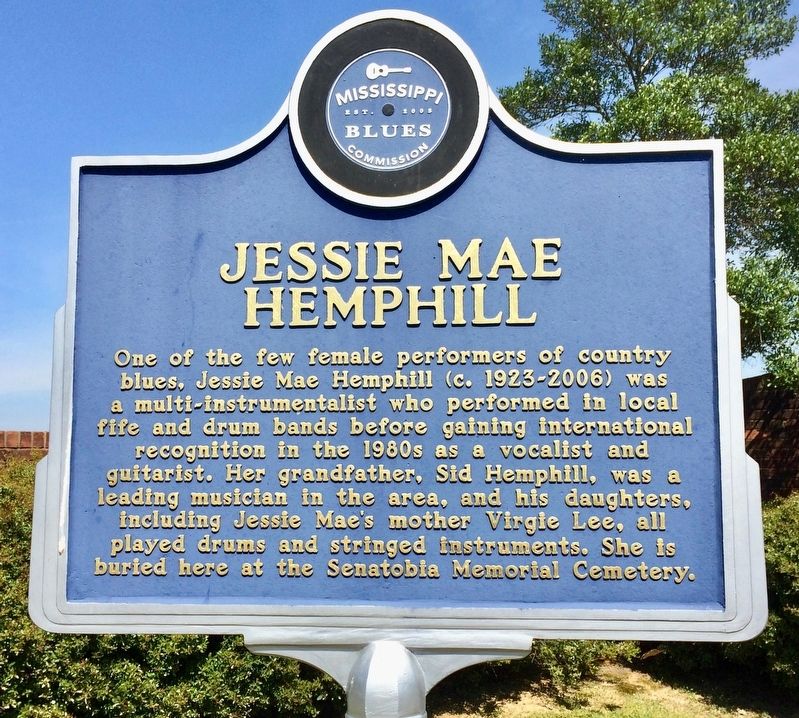
source
autres
Interview
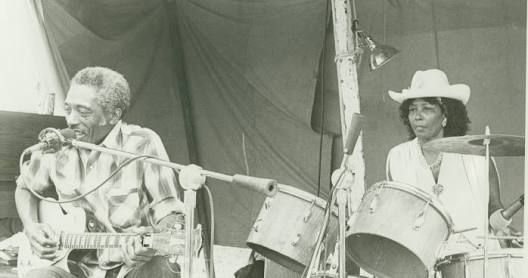
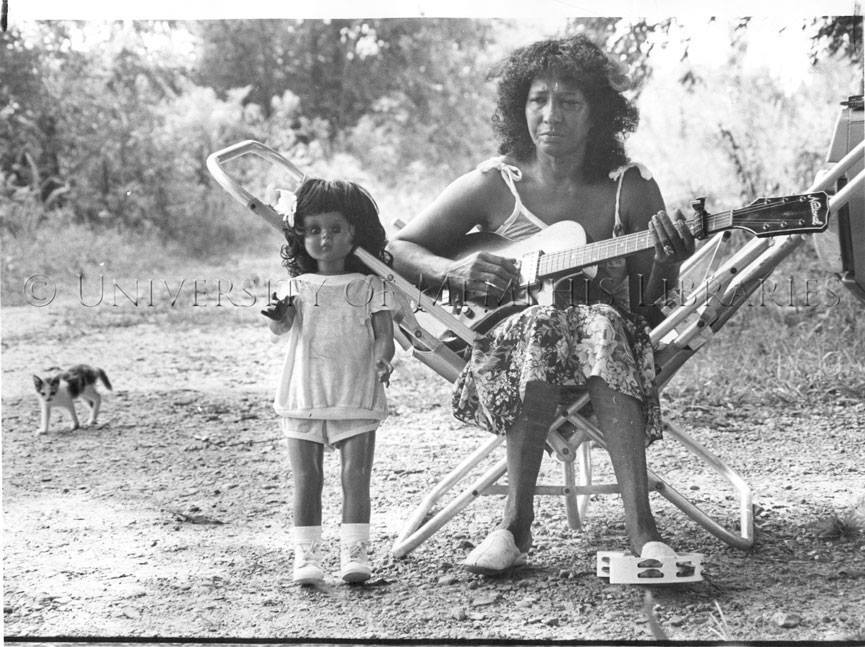
Invité- Invité
 Re: DES GUITARES (et basses) ET DES FEMMES
Re: DES GUITARES (et basses) ET DES FEMMES
à nous les grandes Anglaises
Le groupe est nommé d’après la mère de Steph Joan, et le nom destiné à signifier « femme forte », utilisant le terme « grand » dans le sens des gens des Caraïbes, signifiant « agir grand » ou « agir grandi ».

POC Punk Bands: Big Joanie (Photo Credit: Liz Rose Ridley)
Le punk rock anglais reste dominé par les hommes hétéros. Au grand dam des Big Joanie, un trio de femmes noires qui entendent changer enfin la donne avec leurs festivals.
Dans leurs chansons, elles évoquent le quotidien des femmes noires en Angleterre. Depuis trois ans, elles organisent avec des copines musiciennes le « Decolonise Fest », un festival de Black Feminist Punk, et des ateliers de musique pour une association de jeunes, les « Girls Rock London ». Pas étonnant que Thurston Moore, la légende du groupe Sonic Youth, soit fan et qu’elles aient choisi son label, Ecstatic Peace!, pour publier leurs albums. TRACKS a rencontré les trois chanteuses chez elles, à Brixton.
Big Joanie’s been making some big moves the last few years. The London-based trio has spent the last few years touring with punks like Downtown Boys, playing huge festivals like Afropunk UK, and gigging all over Europe. The most recent addition to their rapidly growing list of accomplishments is the release of their debut LP Sistahs. It’s their most refined work yet, but their sound has an unshakable grit to it that ties with their DIY punk roots.
The three started playing together at First Timers, a DIY festival that spotlights new bands and marginalized identities. Their origins seep through every part of their presence. This band drips with the DIY punk ethos — they’re in your face and have a clear voice, but are unafraid to be playful and interesting. Sistahs is an impressive testament to that. This release is good — like, play on loop for the entire day and tell everyone you know that they have to listen to it immediately-good. It’s polished, but their sound has a grit to it that keeps it grounded in the same place they built themselves from.
Tom Tom got the chance to chat with the trio about their start, DIY in London and other bands they’d love to play with.
TTM: Big Joanie came together at a First Timers competition, yeah? Can you talk more about what it was like starting a band that way? Did your style come together easily, or did it take a lot of trial and error?
BJ: Starting at First Timers made it easier for us to get going, as there was a set deadline by when we needed to be ready for our first gig, and it also gave us a community straight away. As every other band was playing for the first time too it made it feel like a really comfortable and supportive gig space – everyone was putting themselves out there and there was no pressure to be perfect.
Our style came together quite easily and naturally – it wasn’t really something we had any predisposed ideas about when we started. Steph had already written a few songs, and Chardine had an idea of how she wanted to play drums, so our style evolved from that.
TTM: From everything I’ve heard about you, you seem like a pretty politically vocal band. Do you think that’s true of your ethos?
Our approach to the band was always about creating space for ourselves as black women in the punk scene, and through that we also created space for other black people or punks of colour to see themselves represented on stage. We’re a DIY band and that’s in our ethos – we see ourselves as existing within the DIY punk community and that involves giving back and getting involved, for example by playing fundraisers for DIY venues, being a part of the volunteer team behind Decolonise Fest, running workshops at First Timers and for Girls Rock London, etc.
TTM: What are your thoughts on the DIY scene in London? How do you think Big Joanie’s embedded itself in the scene?
We feel like we’re a part of London’s DIY scene and have been playing in it for years. As much as the DIY scene has an impact on us and our lives, we hope that we’ve had an impact on it as well. We hope that more punks will start to have conversations around race and look at ways to get more people from poc communities involved and to help them feel welcome. This is part of the reason Decolonise Fest started – to highlight the fact that punks of colour exist in abundance and not as an anomaly.
TTM: You’ve described yourself as “similar to The Ronettes filtered through ’80s DIY and Riot Grrrl with a sprinkling of dashikis.” Can you talk more about how those sounds and styles influence you?
Steph was always influenced by 60s girl groups, and our sound references a lot of late 70s/80s/early 90s bands like X-Ray Spex, The Raincoats, Jesus and Mary Chain, Velvet Underground etc. The Riot Grrrl part of the description references our political attitude, and the dashikis is a reference to our heritage.
TTM: Sistahs is a KILLER album. Seriously. It has the same energy of your earlier stuff but refined into a really tight, complex style that still stays true to the edgy punky fuzz of your first few releases. Could you tell me more about the writing process? Did songs kind of come together over time on their own, or did you have a specific vision in mind?
Thanks! The songs came together over time (e.g. ‘Eyes’ has been in the works for a decade as one of the first songs Steph ever wrote), and we refined them all within the last couple of years. Working with the producer Margo Broom on these tracks really helped us to flesh them out, and she encouraged us to expand upon our ideas of what the songs could sound like. We’d never had a studio experience like that before with the opportunity to include other instruments that we didn’t own ourselves – for example there’s Wurlitzer on ‘Cut Your Hair’, and the synth parts that feature throughout the album came together at the studio. We wanted the album to sound different to our live experience, more like a full body of work, and working with Margo was really integral to making that happen.
TTM: Can you tell me more about the significance of featuring a photo of Steph’s mom on the cover?
The band is named after Steph’s mum Joan, and the name is meant to mean ‘strong woman’, using the term “big” in the sense that Caribbean people use it to mean that you’re “acting big” or “acting grown.” The photo is of Steph’s mum and aunt when they were teenagers on holiday in Wales. It’s a beautiful depiction of sisterhood and friendship, and a snapshot of Black British life from the past.
TTM: You’ve played at UK Afropunk, toured with Downtown Boys, and played with bands like Shopping and The Ex. That’s a pretty sick list! What are some other bands/festivals/venues you want to be involved with in the future?
We’d love to play Primavera because the line-up is always packed full of great artists that we’d love to see, and also it’d be a really good holiday. ESG are coming to the UK next year so if they’d like to squeeze us onto their bill that’d be great! If Sleater-Kinney or The Breeders asked us to play Steph would die. We also love Mitski, The Julie Ruin and Stevie Nicks. Any band with Rachel Aggs in (Shopping, Sacred Paws, Trash Kit) is always on our wishlist.
We’d love to be able to play in the States, as well as visiting more parts of Europe and the rest of the world, as we’d like to reach more punks of colour beyond the UK. We really enjoyed some of the venues we played in recently with Parquet Courts, like The Roundhouse in London, Paradiso in Amsterdam and Elysee Montmartre in Paris. It’d be amazing for us to play The Brixton Academy in London, as that’s a venue we grew up going to see punk bands at.
Invité- Invité
 Re: DES GUITARES (et basses) ET DES FEMMES
Re: DES GUITARES (et basses) ET DES FEMMES
Dolores Nevares de Goni, better known as Madame Knoop (ca.1820-after 1855), was a Spanish excellent guitarist who gave very entertaining performances. She was also a teacher and an outstanding composer. In 1940 she played successful recitals before the royalty and nobility of England and in November of that year she arrived in the United States of America.
Sheet music published by Les Productions d’OZ (DZ 1335) in the album:
'Guitar Music by Women Composers' (research, transcriptions, revision, fingering and lay-out by Annette Kruisbrink).

Invité- Invité
 Re: DES GUITARES (et basses) ET DES FEMMES
Re: DES GUITARES (et basses) ET DES FEMMES
CAPITALIST BLUES
Leyla Sarah McCalla, née le 3 octobre 1985 dans le Queens (New York), est une musicienne et chanteuse classique, folk et blues américaine. Elle a joué avec les Carolina Chocolate Drops puis a décidé de se concentrer sur sa carrière solo, en développant un répertoire inspiré du blues, des musiques cajun et du folklore haïtien.
[...]
Elle joue du violoncelle, du banjo et de la guitare, et chante en créole, en anglais et en français. En France, elle se produit avec le saxophoniste de jazz Raphaël Imbert qu'elle a rencontré en 2011 lorsqu'il séjournait à La Nouvelle Orléans pour le projet OMax at Lomax.
[suite wikipédia]
Leyla McCalla, chanteuse et violoncelliste New-Yorkaise d’origine Haïtienne, s’installe à la Nouvelle-Orléans en 2010, où elle se fait repérer en jouant dans les rues. C’est comme ça qu’elle rejoint les Carolina Chocolate Drops, un ensemble de cordes afro-américain primé aux Grammy Awards. Elle se lance ensuite en solo avec un album d’adaptations de poèmes de Langston Hughes. Son troisième et nouveau disque est, lui, revendiqué comme un ensemble de « protest songs », baignant à la fois dans l’héritage cajun de la Louisiane et dans ses origines haïtiennes.
Capitalist Blues, est paru le 25 janvier sur le label Jazz Village/PIAS. Elle sera en concert à Courbevoie le 21 mars et à la Cigale à Paris le 27 mars.
Tantôt banjo, tantôt guitare à la main, la musicienne et chanteuse nous livre quelques morceaux de son dernier album Capitalist Blues. Sa voix envoûtante passe aisément du blues américain au folklore haïtien : magnifique. Retrouvez-la sur scène le 27 Mars 2019 à la Cigale. [c'est trop tard]
« Money is king » I Live Néo Géo

« Le créole sera toujours une langue de résistance. »

« Le créole sera toujours une langue de résistance. »
Invité- Invité
 Re: DES GUITARES (et basses) ET DES FEMMES
Re: DES GUITARES (et basses) ET DES FEMMES
même en jupette et japonaise, c'est pas ma tasse de thé musicale, mais bon, comme on dit "ça déchire"BAND-MAID is a Japanese rock band formed in 2013. The band combines a rock sound with a maid image modeled on Japanese maid cafés.[8] Originally signed to Gump Records (an imprint of the Platinum Passport artist management and talent agency), they switched to major label Nippon Crown's sub-label Crown Stones in 2016 and later moved to new sub-label Revolver Records in 2019.
Quite simply, Band-Maid may be the best straight-ahead rock band in the world today. They are certainly better than any others I know of. It isn't a single thing. Their composition draws on jazz, funk, rock-'n-roll, heavy-metal and classical, all whipped up perfectly and then blasted out with the power of an air-raid siren. The back line of Misa on bass and Akane on drums are as good as any in rock or metal, and they add the skill and inventiveness of accomplished jazz musicians. The lead guitarist, Kanami Tono, can shred like a demon, but it's not just the solos--her accompaniment to the singing is never passive or repetitive. Saiki and Miku harmonize beautifully, and Saiki can belt like there is no tomorrow. No bad songs on here. None.
KANAMI TŌNO, from BAND-MAID
Best Guitar Solo
Miku Kobato (小鳩 ミク) – rhythm guitar, vocals
Kanami Tōno (遠乃 歌波) – lead guitar
Akane Hirose (廣瀬 茜) – drums, percussion
Misa (stylized as MISA) – bass guitar
Saiki Atsumi (厚見 彩姫) – lead vocals“Octaves, tapping, string skipping… I might be asking for too much, but I would like to improve all of these techniques... A good guitar solo will trigger emotions. I always keep that in mind"
source 2020
Invité- Invité
 Re: DES GUITARES (et basses) ET DES FEMMES
Re: DES GUITARES (et basses) ET DES FEMMES
AÏTA IGELEKE
Aitua est guitariste, arrangeur, compositrice et professeur. A l’origine de deux albums Elements et Medieval Game, son style musical est très varié, allant de la musique classique tel que The Wings, à la musique Soul comme Life is a Scam. Membre du Quatuor de Guitares Aitua, elle arrange des morceaux de musique classique de célèbres compositeurs noirs de l’histoire comme le Chevalier de Saint-George, tout en racontant leur parcours de vie.
Aitua se produit également au Trianon de Paris en 2018 retransmis sur Arte Concert avec Chilly Gonzales avec des musiques Jazz, Rap et Soul. En 2019, Aitua collabore en compagnie d’autres musiciens du monde entier sur le clip musical Do What You Love, fondé par le rappeur américain Logic et l’acteur américain Joseph Gordon–Levitt (fondateur de la plateforme HitRecord). Le documentaire consacré à ce projet est nominé aux Grammy Awards.
Invité- Invité
 Re: DES GUITARES (et basses) ET DES FEMMES
Re: DES GUITARES (et basses) ET DES FEMMES
Née en 1985 Corée du Sud, Kyuhee Park commence à étudier la guitare à l'âge de trois ans, gagnant son premier prix à l'âge de 9 ans.
En 2004, au Toky College of Music et, sous la direction de Seiji Ozawa, elle participe à une tournée avec orchestre. A Tokyo, elle est élève de Shin-ich Fukuda et Kiyoshi Shomura, deux guitaristes japonais de renom. Elle a étudié à Vienne, sous la direction du célèbre guitariste uruguayen Alvaro Pierri.
Kyuhee Park donne depuis de nombreuses années des concerts a travers le monde entier, notamment au Carnegie Hall de New York. Elle a, à ce jour, déjà publié six CDs grandement encensé par la critique, Sueno (2010), Sonata Noir (2012), Naxos Laureat Series (2013), El Ultimo Tremolo (2013), Saudade (2014) et Spanish Journey (2014).
Kyuhee Park joue sur une guitare du luthier français de renom Daniel Friederich.
quels trémolos !
Invité- Invité
 Re: DES GUITARES (et basses) ET DES FEMMES
Re: DES GUITARES (et basses) ET DES FEMMES
Compositrice, arrangeuse et guitariste, Rosinha de Valença, est née en 1941 à Rio de Janeiro.
Quand elle était enfant, elle se intéresse à jouer de la guitare acoustique, elle a vu son frère jouer. Elle s'enseignait, écouter de la musique à la radio. À 12 ans, elle a joué avec de nombreux artistes de sa ville natale, dans les bars et sur Radio Valença. En 1960, elle a cessé d'étudier pour se consacrer à une carrière musicale. Cependant, les premières années ont été difficiles pour la musicienne. Comme elle était une femme, sa famille n'a pas aimé l'idée de la jouer de la guitare. En fait, quand elle a commencé sa carrière, seulement quelques personnes ont prêté une attention à elle. [...]
source
Comme le titre de son album de 1971, Um Violão em Primeiro Plano, Rosinha de Valença a gardé la guitare au premier plan au cours de sa courte carrière. Souvent négligée par les canons de la bossa nova, bien qu’ayant été une figure clé à l'apogée du genre dans les années 1960, Valença a été l’un des plus grands guitaristes acoustiques dans la musique et l’histoire brésiliennes.
Consolação, Baden Powell, 1966
Samba de uma nota só (Antônio Carlos Jobim)
avec Sivuca, bandonéon
"Saudade de Matão" (Raul Torres)
technique impressionnante, richesse harmonique, groove rythmique,
mon tout pour une musicalité exceptionnelle
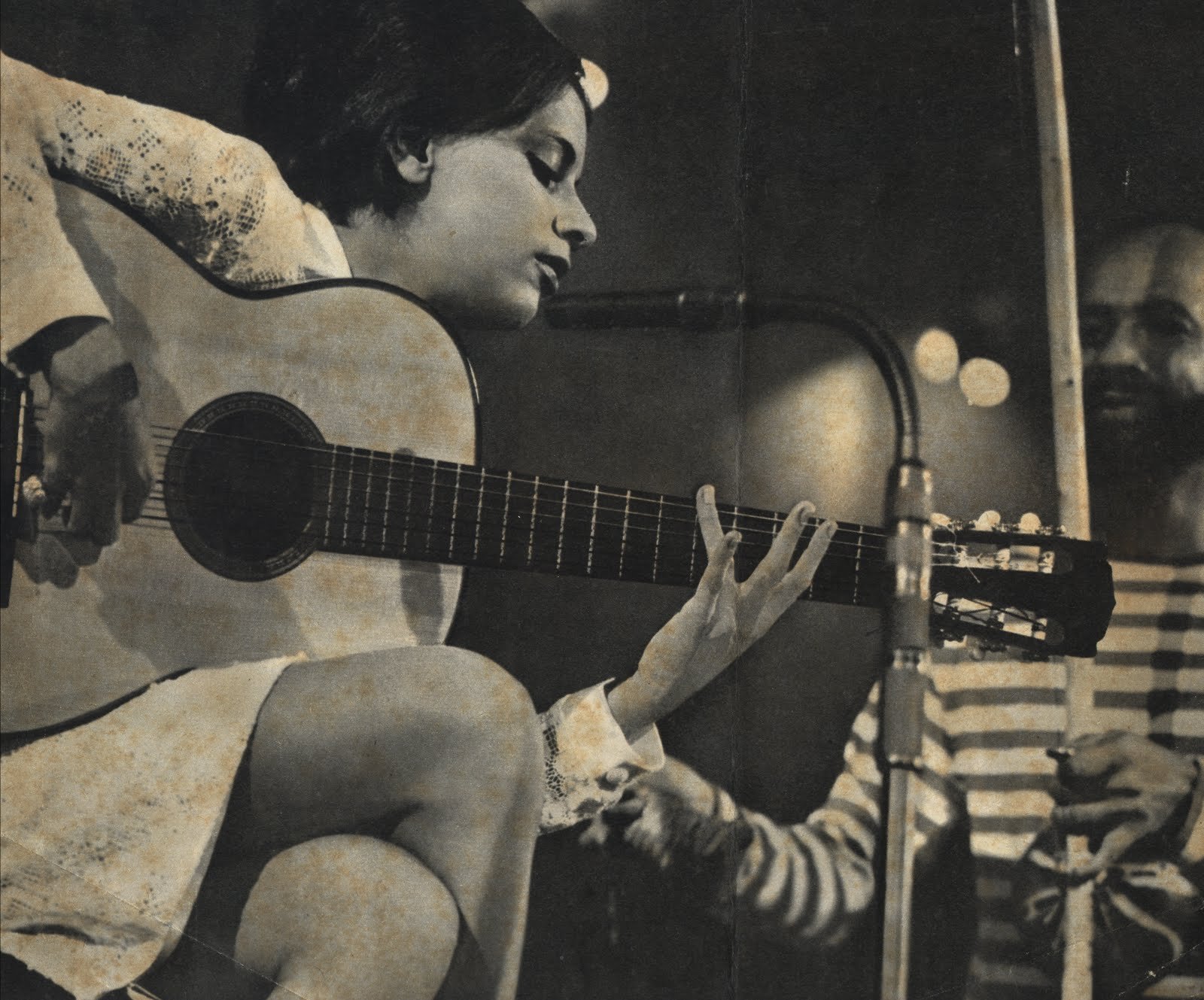
Samba de uma nota só (Antônio Carlos Jobim)
avec Sivuca, bandonéon
"Saudade de Matão" (Raul Torres)
technique impressionnante, richesse harmonique, groove rythmique,
mon tout pour une musicalité exceptionnelle

Invité- Invité
 Re: DES GUITARES (et basses) ET DES FEMMES
Re: DES GUITARES (et basses) ET DES FEMMES
LE BLUES N'EST PAS UN PRIVILÈGE NOIR
Larkin Poe, sisters Rebecca and Megan Lovell, joined us at the Blues Radio International recording space at the 2018 Blues Music Awards to film an exclusive performance for our worldwide audience. Here is "Trouble In Mind."
Larkin Poe was a Blues Music Award nominee in the Best Emerging Artist Album category sponsored by Blues Radio International.
Recorded May 9, 2018 in Memphis
Sound by Jack Gauthier of Lakewest Recording in Rhode Island
Preachin' Blues is a Son House cover on Larkin Poe's recent album 'Peach'
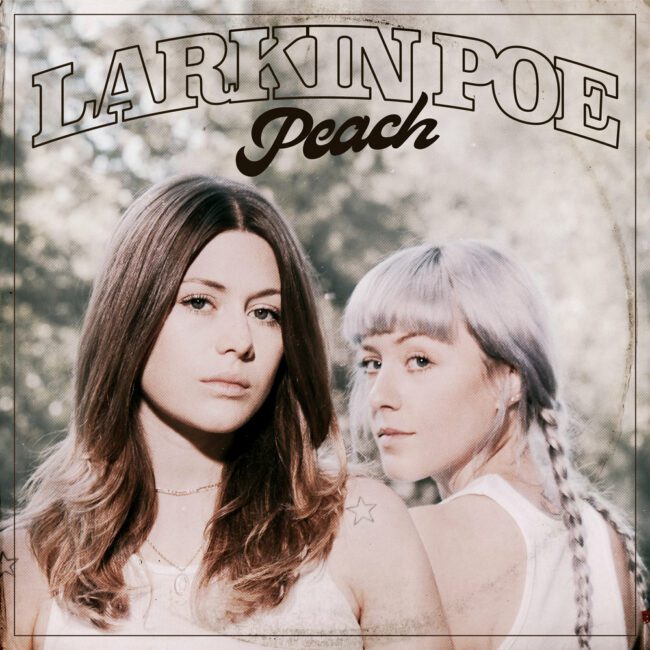
Invité- Invité
 Re: DES GUITARES (et basses) ET DES FEMMES
Re: DES GUITARES (et basses) ET DES FEMMES
AFROPUNK
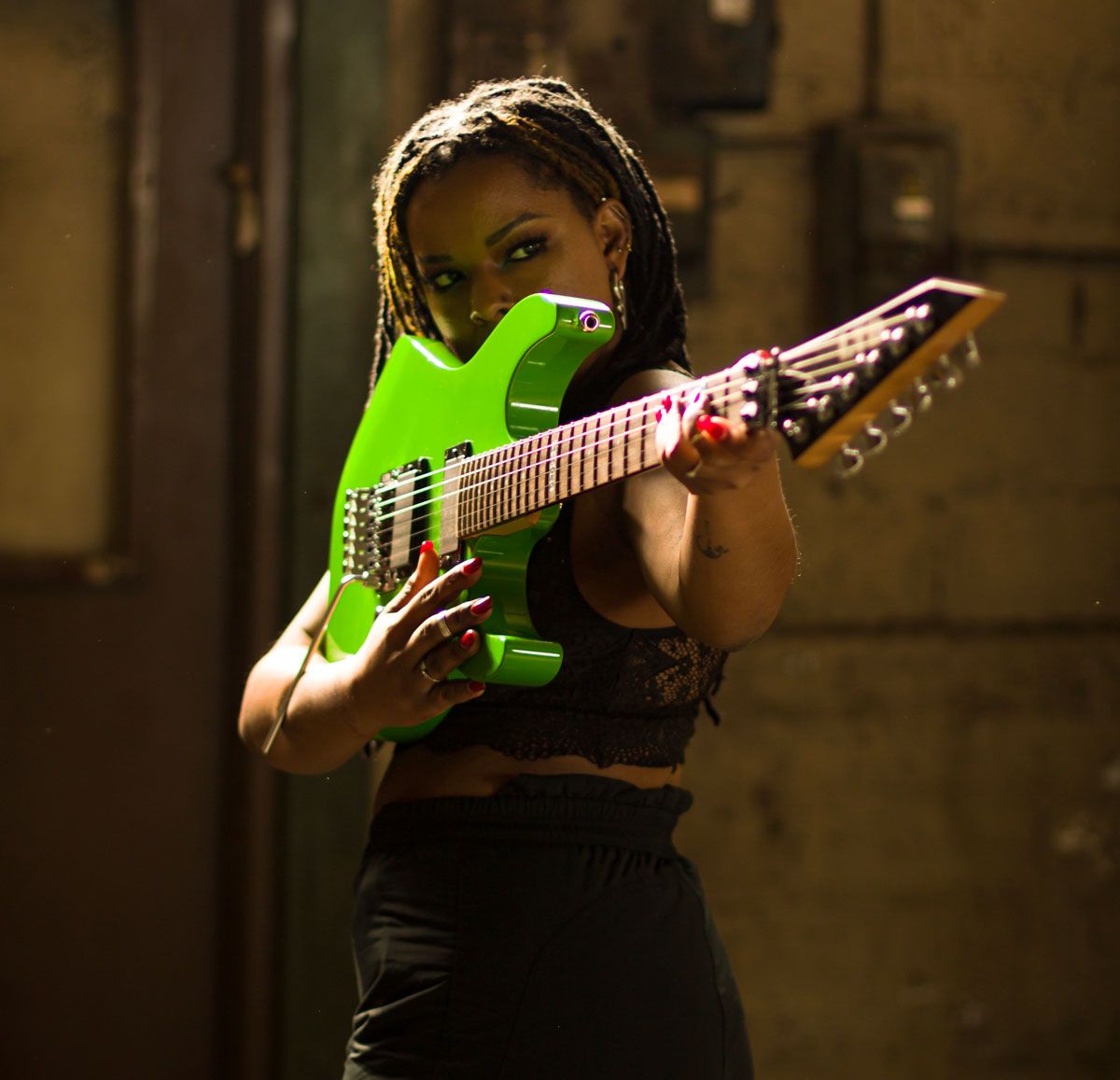
Guitar Gabby:
"Understanding where guitar music came from helps young black women like me,
out here paving our own paths"
Guitar World
Official music video for Another Tear off our ep, Queens of The New Age!
The LTD-wielding guitarist talks the music business, The TxLips Band and the genius of Sister Rosetta Tharpe
Guitar Gabby (Image credit: Jawan Scott)
“I am happy to play my role in bringing the change that’s much-needed in this industry,” explains Gabriella ‘Guitar Gabby’ Logan, who manages and fronts her own collective, The TxLips Band.
Today the American singer/guitarist is speaking to Guitar World about how she’s creating a global platform for black women in music and hoping to inspire a diversity that’s still clearly lacking across all sectors of the industry. Her message is a powerful one that needs to be heard.
“I realized there was such a large gap in the industry for women musicians in general, but especially black women,” continues Gabby. “I didn’t see enough or any black women really, at the time.
"It reminded me of middle high school, starting to play guitar and having my own identity issues, figuring how to identify myself as a black woman in this world. So I decided to start something, first and foremost for the representation of black women, where we can control the narrative...
“I also wanted it to be a platform for women to participate and play music without having to sacrifice the other hats that we as women often have to wear in life. A lot of the ladies in the collective over the years, all of us come to think of it, work full-time jobs.
“Some are bankers, I’m a lawyer! A lot of them have been moms. There are a lot of hats we have to wear, so this collective makes sure we can play and do what we love without sacrificing anything else in life.”
As the founder of The TxLips Band, music has already taken Gabby far and wide, she’s spent the last two years touring in support of their Queens Of The New Age EP.
The singer/guitarist also has a new solo album out, Musicology, which blends alternative rock with pop, psychedelic folk and a whole host of other sonic tapestries. The two projects live side-by-side and intertwine, with a growing network of professional musicians on call around the world...
Whenever I go out and tour or do studio sessions or music videos, I subcontract black women around the world to join in with me
“The band is a collective,” says Gabby, of her growing roster of talent. “Whenever I go out and tour or do studio sessions or music videos, I subcontract black women around the world to join in with me. Last September, one of my independent tour dates was in London and I didn’t have a drummer…
“Our player in the States didn’t come with us, so it was me with a keys player and bassist from Atlanta and a local girl called Lauren. I always work with professional musicians - they have the songs beforehand.
"Then we do rehearsals in that city, we do the show, everyone collects their money and I’m onto the next city. It’s a collective backing band to some degree!”
Tell us about your musical heroes growing up...
“I taught myself by listening to a lot of punk and grunge. Nirvana were one of my favorites - there was something so eloquently badass about how Kurt Cobain took what he was going through in life and expressed himself in his songs and lyrics.
"I really identified with how the expression came out of the music with that band. Then I got into Jimi Hendrix, who I absolutely love. It wasn’t until college when I learned about Sister Rosetta Tharpe.”
The Godmother Of Rock And Roll! That famous footage of her playing Up Above My Head is electrifying to watch...
“To this day, she’s still one of my biggest inspirations - not just for guitar, but how she carried herself in the era she was living in. Being one of very few women, especially black women, working in music during the American early 1900s can’t have been easy… and she just kicked ass. She knew who she was.
"I wish I’d heard of her when I was younger - I can only imagine how as a young black girl that would have looked and felt. She used to shred everyone’s brains out and then walk off stage in a clean white coat completely unscathed.
“I also love Orianthi, who I listened to a lot when I was starting out. Steve Vai is another hero of mine - he’s why one of my first guitars was an Ibanez RG. I remember hearing him and telling myself, ‘Okay, one day I’ve got to get to that level!’ And I’m still aspiring (laughs)!
"I love how Steve Vai manipulates guitars and sounds to give you this weird, wacky alien vibe. I’m in my studio office right now, looking at all my posters of the players I just listed...”
So how did you end up becoming a session player?
People who are not musicians have a hard time managing musicians
“I’m from Atlanta - well, between Atlanta and DC but mostly Atlanta - and growing up one of the records I used to listen to all the time was by Crime Mob. Back in 2016, management for one of the young ladies in the group, her name was Diamond, reached out to me and said she needed a guitarist for a music video she was doing. I went to the shoot and eventually started playing guitar for her when she would tour.
“I ended up pulling together the band and then started managing the band, because one thing I learned really quickly is that people who are not musicians have a hard time managing musicians. They don’t understand everything we need. So I started managing her group for her label and then simultaneously started The TxLips Band.”
You’ve written numerous articles and given countless seminars on self-management. What’s the most important piece of advice you tend to share?
“Whether you are an artist, musician or manager, it’s important to understand and know the basic fundamentals of what makes the music business a business.
"A lot of people use the words musician interchangeably, which they are to a certain degree, but there is a difference between those who play behind the artist and those who are the artist.
“Contracting is one of my personal areas of expertise - it comes from my enjoyment when it comes to law things! I remember for my very first out-of-state show with my band in 2016, I wrote my own contract.
"I thought I understood enough to draft something up, but there were things I didn’t think of to put in there. And to this day we still haven’t been paid! So you need to understand how and why the business works, at all levels from streaming to copyright.”
It’s often thought of as boring - but just about every kind of musician could benefit from being made aware of these things earlier on…
“I always stress this to musicians… your copyright is the legal protection of what you wrote or what you expressed. That’s everything you’ve gone through, all your experiences in life and how you relate to people is by expressing that.
Even if you don’t want to write your own contracts, just knowing what things should be red-flagged when you are given one to sign is extremely important
"If you don’t know how to protect that or end up granting over your rights to a label or somebody else, you might never get that back and eventually it will mess with your money.
"I want musicians to understand more things like that. Even if you don’t want to write your own contracts, just knowing what things should be red-flagged when you are given one to sign is extremely important.
“I use my platform to stress those things, through social media or training classes. All summer camps have gone virtual this year, so I’ve partnered with local girl rock camps around the world to bring classes about this stuff.
"That way they can understand what it means and they can carve their own path in the music industry. Form a business that can protect your work and the expression carried in your work. These are all important things to consider.”
How else can up-and-coming musicians prepare for a career in music?
“I would say branding and marketing that brand are so important. There are millions of talented people out there, who are wicked on one instrument… or all instruments, like Prince! But if you don’t know how to create and build a brand, the longevity will be very limited, that’s the nature of how this industry is.
"One day an artist is popular, the next day they are not. It might be because of people’s attention spans and they have nothing to relate to that brand. I had to do a lot to figure out what I wanted to achieve.
“That even goes for the guitar you play. I tie The TxLips and Guitar Gabby brands to my green guitar because it helps me stick in people’s heads! You need to know how to hit the right people at the right time and place. Instagram and Facebook are so overwhelmed with everybody doing everything.
Anyone who tours has to love a locking nut because you can just pick up a guitar, plug in and go
"It’s hard to make yourself stand out in a sea of other musicians in this crazy industry. Those who understand their brand enough to make it stick are the ones with longevity. Beyoncé is one name I think about. Prince was another. The same goes for Steve Vai… you see a DNA swirl or hear that tone, and you think of him straight away.”
Speaking of your neon green LTD, what’s the story behind that guitar?
“It very quickly became my main one! I got an endorsement with ESP about three or four years ago and it was the first one to pop my eye. That specific shade of green is my favorite color. I got it home and did some modifications to make it match better with my pedalboard setup and amp tones.
"It’s an M-50FR with a locking nut, which I really appreciate. Anyone who tours has to love a locking nut because you can just pick up a guitar, plug in and go. It has a Floyd Rose bridge which I love for divebombs in my solos.
“My current pickups are the EMG Kirk Hammett Bone Breaker set - I really like the sound of them. They’re active and high-output but enough flexibility to mould and switch around my tone as needed. I mostly use my analog 'board for studio work. When I tour, I don’t get to take everything so I switch to a Boss ME-50 multi-effects unit.
"The combination of the guitar and pickups has enough variation to work no matter what amp I’m using. What I look for usually is a tube amp with reverb, with more of a bassy and grungey kind of sound.
"It’s typically an Orange or a Fender for live stuff, though I actually prefer 50-watt Crate amps, which is what I have at home. To be honest, if I get anything with a good clean channel and reverb, I can make it work!”
What else can be done to encourage inclusivity on a wider level?
“A lot of it starts with listening. A lot of us as humans have a tendency to not listen to others when we feel we have our own point. Being able to sit down and hear about other people’s experiences, even if you don’t necessarily understand or agree, helps open up future conversations.
"We are all so different and yet so much more alike than we think. Making a conscious effort to understand someone else’s journey will make you a better person and the environment we are all in that much better.
Being able to understand where guitar-based music - which made a lot of people rich - came from can do wonders
“There’s so much online… Google is free! Go look at Sister Rosetta Tharpe. Even all these years later, people are obsessed with her, even more so in recent years. Looking at the history of where rock and roll came from or the history of blues can take people a long way.
"I was recently speaking to my reps about the lack of diversity on the business and marketing fronts, not just with them, but with a lot of companies all around the world. Being able to understand where guitar-based music - which made a lot of people rich - came from can do wonders.
"It will open up doors, expanding minds but also helping young black women like me, out here paving our own paths. It’s helping make sure that black women have a seat at the table instead of being behind the scenes like we always have been.”
Guitar Gabby (Image credit: Jawan Scott)
It’s been amazing to see some exciting young players like Nandi Bushell emerge in recent years...
“I am absolutely amazed by that young girl and how much she inspires. If you are a young person of color and you see somebody that looks like you doing something that you want to do, it must feel like the whole world opens up. Suddenly, there are no limits to what you can do. I never had that when I was growing up… I can only imagine the inspiration other girls will feel watching her videos.
“When I saw Tom Morello had sent her one of his Soul Power guitars, I thought it was so fucking cool… and she’s still so young! I have so much respect and admiration for her. She’s putting on for the girls of the current generation and the ones behind her. And you have to remember she inspires not even young girls but adults as well. Honestly, I’m inspired by her every day...”
Musicology is out now.
Invité- Invité
 Re: DES GUITARES (et basses) ET DES FEMMES
Re: DES GUITARES (et basses) ET DES FEMMES
An audio introduction to
Wendy Eisenberg
Wire, July 2020
transmis par l'excellentissime @milesokazaki
passionnante découverte sur les chemins croisés
du jazz, de la guitare brésilienne et de la chanson
Bien qu’Eisenberg ait suivi une formation de guitariste de jazz et étudié l’improvisation, elle finit par revenir à l’écriture de chansons. Dans son interview pour Wire, elle explique son inspiration par les guitaristes et compositeurs brésiliens João Gilberto et Egberto Gismonti : « Pour moi ils ont légitimé l’écriture de chansons dans une sorte de relation tangentielle avec l’idiome du jazz », explique Eisenberg, « João Gilberto est probablement la plus grande affaire pour moi, harmoniquement et tout. »
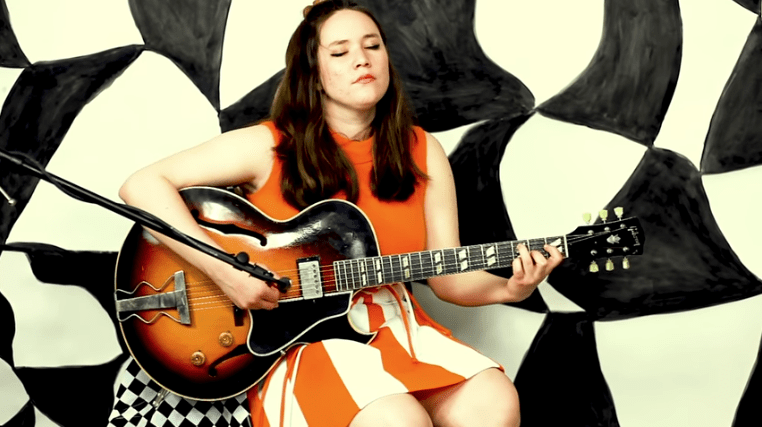
The US guitarist compiles a selection of songs spanning their various previous releases and shares an exclusive track
“Dehiscence is a break-up album that casts a kind but critical eye on the idea of breaking up itself,” writes Frances Morgan in The Wire 437, reflecting on the latest album by songwriter Wendy Eisenberg: “the solipsism and tragicomedy of heartbreak, its weird highs and lows, how it positions you in relation to society and yourself.”
Although Eisenberg trained as a jazz guitarist and studied improvisation, they eventually returned to songwriting. In their Wire interview, they explain the inspiration they took from Brazilian guitarists and composers João Gilberto and Egberto Gismonti: “[they] legitimised songwriting in some sort of tangential relation to the jazz idiom for me,” Eisenberg explains. “Probably João Gilberto is the biggest deal for me, harmonically and everything.”
Here, Eisenberg has compiled a playlist of songs from their latest release and those leading up to it, and shares the recording “Gossip Song” for the first time.
Audio Player
“I Was Fine” From Collected Early Works
“Strike Through” From Collected Early Works
“Postal Man” From Time Machine
“Brain Today” From Time Machine
“Sawn” From Its Shape Is Your Touch
“Early November” From Its Shape Is Your Touch
“Frayed, Knotted And Unshorn” From Machinic Unconscious
“Mycoaelia” From Machinic Unconscious
“Zoning” From Machinic Unconscious
“Yellow Hand” From Dehiscence
“As The Bird Flies In Vermont, For Carrie” From Dehiscence
“Now Proceed” From Dehiscence
“Half The Time” From Dehiscence
“Gossip Song” (bonus track)
Read Frances Morgan's full interview with Wendy Eisenberg in The Wire 437. Subscribers can access the article via the digital archive.
Invité- Invité
 Re: DES GUITARES (et basses) ET DES FEMMES
Re: DES GUITARES (et basses) ET DES FEMMES
Linda May Han Oh (born 25 August 1984, in Malaysia) is an Australian jazz bassist and composer.
Biography
Oh was raised by Chinese immigrants in Western Australia and was taught classical piano from the age of four years. When she was 11, she started to play the clarinet and at the age of 13 bassoon. As a bass guitarist she started in a high school band; and in 2002 she attended the Western Australian Academy of Performing Arts, where she picked up the upright bass and studied solo transcriptions of Dave Holland. Her thesis was on the classical Indian music rhythms in Holland's solos. After more scholarships she moved to New York in 2008, where she completed her master's degree at the Manhattan School of Music, among others with Jay Anderson, John Riley, Phil Markowitz, Dave Liebman and Rodney Jones as supervisors.All Blues
duo avec Ben Wendel, basson
vidéo ajoutée
In 2008 she released her debut album Entry with own compositions and a cover version of Red Hot Chili Peppers Oztrax, with the trumpeter Ambrose Akinmusire and drummer Obed Calvaire. Oh also contributed to albums with the alto saxophonist Jon Irabagon (Outright, 2008), Sarah Bemanning (Løvetann Klokke, 2010), Brian Girley (Tro, 2011) and Art Hirahara (Hygget & Meditasjoner, 2014). In 2012 the album Initial Here, med pianist, Fabian Almazan was released, followed by Sun Pictures (Greenleaf), among others with Ted Poor. In addition, she has performed with Slide Hampton, T. S. Monk, Nathan Davis, George Kabler, James Morrison, Nasheet Venter, Joel Frahm, Pat Metheny, Steve Wilson and Billy Childs. She lives in the Harlem district in New York City.
Honors
During her career, Oh has received many Australian and international awards:
2003: One of the finalists in James Morrison Scolorship.
2004: Winner of the competition IAJE Sisters in Jazz.
First prize for best presentation at her exam.
2006-2008 she was a scholarship holder of the program Betty Carter ' s Jazz Ahead, Banff center, program for creative improvisation, and Steans Institut.
2008: Participant of ASCAP Young Jazz Composer’s Award
2009: Semifinalist of the Thelonious Monk International Jazz Bass Competition.
2010: Winner of the Bell-Prize for young Australian jazz musicians of the year.
2016: Nominated for JJA Awards.
Discography (in selection)
2012: Initial Here (Greenleaf Music - GRE-1024)
2013: Sun Pictures (Greenleaf Music - GRE-1032)
2017: Walk Against Wind (Biophilia Records - BREP 0008)[2]
2019: Aventurine (Biophilia Records)
Invité- Invité
 Re: DES GUITARES (et basses) ET DES FEMMES
Re: DES GUITARES (et basses) ET DES FEMMES
interlude
LE "PRIVILÈGE BLANC"
1987
Autant en emporte le blanc ?

Les Reines de la country harmonisent à trois voix et se mettent en quatre dans The Complete Trio Collection.
En 1987, Dolly Parton, Emmylou Harris et Linda Ronstadt parviennent à caler leur agenda et contribuent à la naissance de l’americana, une remise à jour des racines du grand songbook folk-country-blues américain. Trio, le premier album éponyme du G3 de la country-music, rassemble standards du genre, originaux et reprises choisies (Linda Thompson, Kate McGarrigle, le « To Know Him Is To Love Him » de Spector…) sous la houlette de George Massenburg et les participations de gâchettes bien connues du côté de Nashville, dont Ry Cooder, son acolyte David Lindley, Albert Lee, Russ Kunkel et Lee Sklar.
source
Invité- Invité
 Re: DES GUITARES (et basses) ET DES FEMMES
Re: DES GUITARES (et basses) ET DES FEMMES
Elle crée des sonorités d’une rare beauté et a une présence sur scène envoutante. C'est ainsi qu'Irina Kulikova touche le cœur de son public à travers la planète. Elle appartient à cette catégorie de musiciens qui provoquent une profonde émotion grâce à la pureté de leur performance.
Fille d’un professeur de violoncelle russe, Irina Kulikova a commencé à développer son oreille musicale exceptionnellement jeune. A 5 ans, elle obtient sa première guitare. A 8 ans, elle se produit pour la première fois devant un public. A 12 ans, Irina était une enfant star jouant déjà dans toute la Russie et dans des festivals européens, déjà reconnue par certains des plus importants guitaristes et critiques du monde. A 14 ans, son nom apparaissait dans le livre "The Classical Guitar, its evolution, players and personalities since 1800" de Maurice Summerfields.
[...]
source Savarez

« Here I am 14... photoshoot was in Chelyabisnk/ Russia »
"Il s’agit de la touche", c’est ma devise personnelle dans la vie et la musique : si vous accordez toute votre attention à ces petites choses qui rendent la vie belle, vous aurez un impact positif et durable sur les gens autour de vous.
Je peux vous assurer que dans l’enregistrement, j’ai donné à chaque note, à chaque phrase, à chaque pièce, le meilleur de mon attention.
Invité- Invité
 Re: DES GUITARES (et basses) ET DES FEMMES
Re: DES GUITARES (et basses) ET DES FEMMES
Leyla Sarah McCalla, musicienne et chanteuse classique, folk et blues américaine, présentée ici le 21 juin. À vrai dire, hormis le côté technique et quelques musiciennes hors pairs dans divers genres*, que Leyla McCalla traverse et transcende, elle est une de mes seules vraies découvertes
* Abigail "Abby" Zachko, Mohino Dey, Kinga Głyk, Juna Serita, Yuki Matsui, Big Joanie, Wendy Eisenberg, Irina Kulikova
CAPITALIST BLUES 2
a Conversation with Leyla McCalla
a Conversation with Leyla McCalla
The BlueGrass Situation @TheBGSituation Roots Culture Redefined
On this episode of The Show On The Road, a conversation with @LeylaMcCalla, multi-lingual cellist, banjoist, and singer/songwriter – you may know her from @ONDaughtersor her latest album, The Capitalist Blues.
Listen wherever you get your podcasts:Born in New York, raised in New Jersey, and McCalla is now based in New Orleans, where she raises three kids (she often tours with them in tow). McCalla often honors her Haitian heritage, bringing listeners into a vibrant world of Creole rhythms and forgotten African string-band traditions by introducing them to a new audience with her own powerful creative vision.
You may know McCalla as an integral part of two different roots supergroups: the Carolina Chocolate Drops and Our Native Daughters. But for much of the last decade, she has put out heady, ever-surprising solo projects. The latest, The Capitalist Blues, harnesses the brassy, percussive sounds of New Orleans; her previous record, A Day for the Hunter, A Day for the Prey, was also a standout, putting her gorgeous cello-work center stage while also examining powerful Haitian proverbs and Haiti’s often-overlooked, tragic history.
Our Native Daughters
Rhiannon Giddens, Leyla McCalla, Allison Russell, and Amythyst Kiah

‘Our Native Daughters’ Project Gives Voice to Black Women in American History
Rhiannon Giddens a écrit:“Gathering a group of fellow black female artists who had and have a lot to say, made it both highly collaborative and deeply personal to me. It felt like there were things we had been waiting to say our whole lives in our art; and to be able to say them in the presence of our sisters-in-song was sweet, indeed. I see this album as a part of a larger movement to reclaim the black female history of this country.”
Invité- Invité
 Re: DES GUITARES (et basses) ET DES FEMMES
Re: DES GUITARES (et basses) ET DES FEMMES
spécial canicule
un peu de fraîcheur
(sans abandonner les 8 cordes)
ANTARA et ANKITA NANDY
Pune, Inde
qui, comme moi, n'est pas fasciné par le son du ukulele, peut toujours se rabattre sur la garde-robe
jeu de mains a fait mon matin
quant à la langue, le Assamese, c'est un créole devenu langue officielle de l'État de Assam, dont la population est multi-ethnique, multilingue and multi-confessionnelle. Comme la France, quoi...
les récentes inondations de la mousson indienne y ont touché deux millions de personnes et fait 130 morts. La région est secouée par des tremblements de terre, et la Covid y connaît un fort rebond, comme en France, quoi...
(sources diverses)
Invité- Invité
 Re: DES GUITARES (et basses) ET DES FEMMES
Re: DES GUITARES (et basses) ET DES FEMMES
spécial canicule
chaud devant !
JENNIFER BATTEN
Jennifer Batten, née le 29 novembre 1957 à New York, est une guitariste de rock américaine. C'est l'une des rares femmes intégrées au cercle très masculin des guitar heroes. Jennifer Batten se fait remarquer grâce à une reprise de Giant Steps de John Coltrane à la fin des années 1980. Elle joue alors dans de nombreux groupes.
En 1987, elle est choisie par Michael Jackson pour intégrer sa tournée mondiale, le Bad World Tour. Elle participera également aux deux tournées suivantes : le Dangerous World Tour (1992-1993) et le HIStory World Tour (1996-1997).
En 1996, elle participe au projet Guitar Zeus du batteur Carmine Appice, qui rassemble de nombreux guitar heroes. En 1998, Jeff Beck l'intègre dans son groupe pour ses tournées et ses albums.
source wikipédia
Invité- Invité
 Re: DES GUITARES (et basses) ET DES FEMMES
Re: DES GUITARES (et basses) ET DES FEMMES
Leyla McCalla
encore
(voir 6 août)
Song For a Dark Girl
by Langston Hughes
Way Down South in Dixie
(Break the heart of me)
They hung my black young lover
To a cross roads tree.
Way Down South in Dixie
(Bruised body high in air)
I asked the white Lord Jesus
What was the use of prayer.
Way Down South in Dixie
(Break the heart of me)
Love is a naked shadow
On a gnarled and naked tree.
2015
Leyla McCalla a écrit:@LeylaMcCalla 13 août
Out today is my single “Song for a Dark Girl”, based on words written by Hughes of black lynchings in 1927. What becomes evident here is that history is not the past. History is a living, ever present part of life.
Aujourd’hui, c’est mon single "Song for a Dark Girl », basé sur des mots écrits par Hughes sur les lynchages de Noirs en 1927. Ce qui devient évident ici, c’est que l’histoire n’est pas le passé. L’histoire est une partie vivante et toujours présente de la vie.
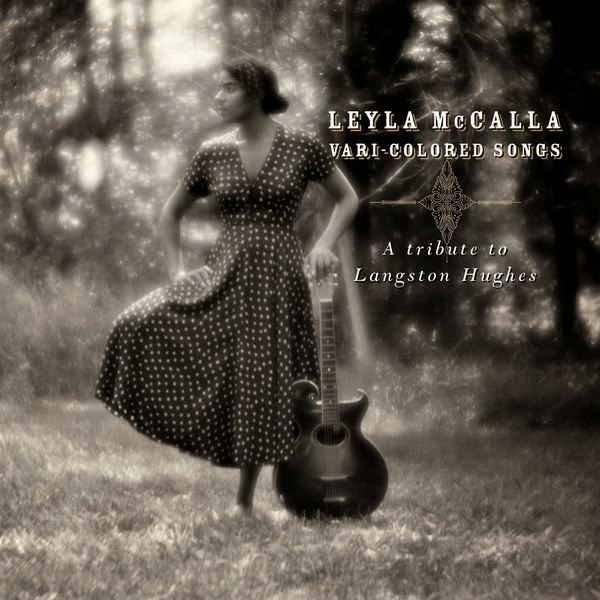
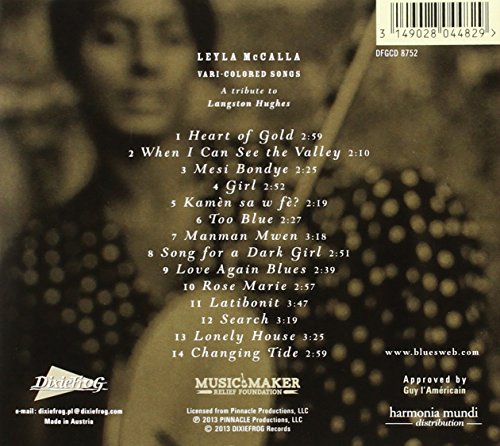
Langston Hughes (1er février 1902 — 22 mai 1967) est l'un des plus importants écrivains noir-américains. Il fut un des principaux acteurs de la « Harlem Renaissance ». Ce mouvement culturel multiforme (littérature, théâtre, arts graphiques, musique) a duré du lendemain de la Première guerre mondiale jusqu'au milieu des années trente. Ce mouvement très créatif était aussi porteur d'aspirations et de critiques sociales concernant le peuple noir-américain et l'Amérique dans son ensemble. On en aura un petit aperçu dans les poèmes de Langston Hughes qui suivent. -> The Weary Blues

Invité- Invité
 Re: DES GUITARES (et basses) ET DES FEMMES
Re: DES GUITARES (et basses) ET DES FEMMES
elle ne joue pas de guitare, mais c'est tout comme, elle n'est jamais loin, sans parler du blues...
BLUES LEGEND BETTYE LAVETTE
DELIVERS POIGNANT INTERPRETATIONS
OF BLACK ’50S FEMALE VOCALISTS ON ‘BLACKBIRDS’ (ALBUM REVIEW)
Jim Hynes in Album Reviews,, August 27, 2020

DELIVERS POIGNANT INTERPRETATIONS
OF BLACK ’50S FEMALE VOCALISTS ON ‘BLACKBIRDS’ (ALBUM REVIEW)
Jim Hynes in Album Reviews,, August 27, 2020

Bettye LaVette, pour l'état civil Betty Haskins, née le 29 janvier 1946 à Muskegon (Michigan), est une chanteuse de soul américaine.
Née en 1946, elle grandit à Détroit. Elle enregistre son premier disque à 16 ans, pour Atlantic Records, un 45 tours simple, My Man, en 1962. Elle participe à des tournées aux côtés de Clyde McPhatter, Ben E. King, Otis Redding et James Brown. Elle enregistres plusieurs disques pour Calla Records et des firmes de Détroit, avant de signer pour Silver Foxx, puis en 1972 pour Atlantic/Atco.
vidéo ajoutée
1962
En 2003 commence, avec l'album A Woman Like Me, ce qu'elle a elle-même appelé une deuxième phase de sa carrière. Puis en 2005, elle enregistre I've Got My Own Hell to Raise, qui ne contient que des interprétations de chansons écrites par des femmes : Lucinda Williams, Joan Armatrading, Dolly Parton, Aimee Mann, Fiona Apple, etc. Le premier morceau, I Do Not Want What I Haven't Got, écrit par Sinead O'Connor est interprété a cappella4. À partir de 2006, elle se voit décerner plusieurs reconnaissances pour son parcours et son œuvre, par la profession. Ainsi en 2006, un « Pioneer Award » lui est attribué par la Rhythm and Blues Foundation. En 2008, la Blues Music Award en fait la « meilleure chanteuse de blues contemporaine » de l'année.
En 2012, elle publie sa biographie intitulée A Woman Like Me.

2020
You’ve likely heard some of the singles from Bettye LaVette’s Blackbirds already. The buzz has been building for some time now and with the social unrest, protests, and momentum of the Black Lives Matter movement, it only made sense to release Bettye’s interpretation of Billie Holiday’s 1939 classic “Strange Fruit.” Strange Fruit” was written by Jewish teacher Abel Meeropol who wrote the song based on a photo of two black men who were lynched as a crowd of white people looked in the camera pointing and smiling. “It really is horrifying that nearly 80 years later, through Billie’s lifetime and now my 74 years, the meaning of this song still applies. It might not be men and women hanging from trees, but these public executions are now on video and it feels like they’re doing it for sport. I hope the song will be a reminder that we have had enough, and I support the Black Lives Matter movement,” said LaVette.
With that backdrop, the timing of the album couldn’t be much better. It’s not that every song included here is a protest statement of some kind but LaVette is reminding us of the enduring power of black female vocalists who paved the way, some never having received due respect. Along with the familiar names of Dinah Washington (“Drinking Again’), Nina Simone (“I Hold No Grudge’), and Nancy Wilson (“Save Your Love for Me”), LaVette renders Sharon Robinson’s “One More Song,” Della Reese’s “Blues for Weepers,” Ruth Brown’s “Book of Lies” and Lil Green’s “Romance in the Dark.” The title track, of course, a bit of an outlier in one way, is from Lennon and McCartney.
The project also re-unites her with producer Steve Jordan. Things Have Changed, an album of Bob Dylan songs produced by Steve Jordan, marked LaVette’s Verve debut in 2018. It received two Grammy nominations. The release of Blackbirds will coincide with LaVette’s induction into the Blues Music Hall of Fame. Jordan also played drums and assembled a group of celebrated musicians (Smokey Hormel on guitar, Monty Croft on vibes, bassist Tom Barney and veteran keyboardist Leon Pendarvis), Nina Simone’s “I Hold No Grudge,” which was suggested for LaVette by the original writer, Angelo Badalamenti, captures the defiance we associate with Simone while adding warmth and hopefulness. “Save Your Love for Me,” popularized by Nancy Wilson, reflects LaVette’s development as a vocal stylist who caresses each lyric, creates the kind of intimate mood once associated with smoky nightclubs and after-hours spots. The tight combo supports brilliantly, never stealing the spotlight from LaVette, but adding that piercing chord or note at just the right moment.
vidéo ajoutée
ainsi que les musiciens :
Smokey Hormel, guitar
Monty Croft, vibes
Tom Barney, bass
Leon Pendarvis, keyboards
Steve Jordan, drums & production
LaVette’s approach is driven by the notion of how of woman of today would sing these songs. She changes some lyrics and personalizes them in consideration of her own experience. The defiance of Simone’s “I Hold No Grudge” could have parallels to LaVette’s own mistreatment by the recording industry. She adds her own “take a toke” to Dina Washington’s line “Maybe I can borrow a smoke/Tell some joker a joke.” She claims she wanted to make the song so sad so that the listener could understand why the person was drinking. About the suggestive “Romance in the Dark,” she tried to phrase the words to make them as suggestive to-day as possible, especially the line “he puts his fingertips on my lips.”
Please see LaVette perform live if you haven’t yet had that opportunity. She will say flat out that she’s an interpreter of songs. She is intent putting her own stamp on them, or as Jon Bon Jovi once said – “she doesn’t just sing the song, she lives in each of them”) The ideal, for all these songs and especially the iconic “Strange Fruit” she adds, is for “your interpretation to be as interesting as that original one.” To that end, LaVette chose songs that she could personalize into reflections of her own experience. Paul McCartney’s “Blackbird,” described above as a bit of an outlier, nonetheless fits into the project’s scope because it speaks for the struggles faced by these women – LaVette’s musical forbears – as they worked to build and maintain their careers. “All my life,” LaVette sings, shifting McCartney’s original lyrics into the first person, “I have waited for this moment to arrive- to be free.” That’s a line now that lends itself to a few interpretations. LaVette has been waiting her entire career to pay tribute to these women and/or the recent calls to action to end pervasive racism.
LaVette came so close to a Grammy with her interpretations of Dylan’s songs. Blackbirds may just push her to the top. It’s difficult to imagine anyone else delivering an album that oozes such deep emotion with each lyric. Clearly, it cements her status as one of today’s elite interpreters of song.
About the author: Jim Hynes
Jim Hynes is an independent contributor on music for several magazines, including Elmore and formerly Variety. He was a listener-supported public station(s) radio host for 25 years in CT, MI, NJ and PA. He is also a Live Music Host/Emcee at several national and regional venues.
Invité- Invité
 Re: DES GUITARES (et basses) ET DES FEMMES
Re: DES GUITARES (et basses) ET DES FEMMES
ce pourrait apparaître comme une chinoiserie de plus dans le paysage culturel. Il n'en est rien avec Xuefei_Yang, parvenue au sommet de la guitare ("classique") mondiale, qui propose des interprétations des musiques de son pays et environs. Une gageure technique, une totale réussite musicale, par cette artiste née dans les années suivant la Révolution culturelle (sic), où la musique et les instruments occidentaux étaient (jeux) interdits...
"I hope this double album will bring a fresh perspective on Chinese music,
an insight into Chinese culture,
and open a door to new repertoire for guitar.”
Xuefei
an insight into Chinese culture,
and open a door to new repertoire for guitar.”
Xuefei
Xuefei Yang a écrit:The experience of travelling the globe and performing music from many different countries has given me a more vivid perspective on my own cultural background. It triggered a desire to share more of my own culture with audiences around the world. And so began a significant personal project to add more Chinese repertoire to the transcriptions I had already made and recorded. This has involved commissioning new works, transcribing pieces and working with other Chinese instrumentalists to create music together.
With the benefits of greater understanding and experience, I now feel ready to present the first harvest of this journey - a double album dedicated to music from my country.
This recording reflects the breadth and depth of Chinese music. The music spans epochs from the Han Dynasty (206BC-220AD) to now, and spans a diversity of styles, including ancient classics, folkloric and modern, using musically significant pieces of repertoire where appropriate. In addition to transcriptions, there are also original compositions for guitar from leading Chinese composers. It also showcases the versatility of the guitar, including solo guitar works, works for guitar and orchestra, and chamber pieces with traditional Chinese instruments.
Classical guitarist Yang Xuefei explores Chinese repertoire for latest album
Ji Yuqiao, Global Times, 2020/8/27
Classical guitarist Yang Xuefei, who was named one of the six best female classical guitarists in the world by BBC Music Magazine, shared the story of how she made her latest album, Sketches of China, on Wednesday in Beijing.
The songs in the album are all Chinese music, Yang said at the press conference. Although the amount of Chinese music specially for guitar is limited, the musician has been trying to explore more areas of the Chinese guitar repertoire, recomposing some by herself to popularize them around the world.
Sketches of China was released on August 7 and has received many compliments from fans and reviewers. BBC Radio 3 broadcast the music in the album and British classic music magazine Gramophone invited Yang to introduce the album.
The guitarist considers the album her first step in exploring the Chinese guitar repertoire. The music in the album covers a huge time span, from the end of the Han Dynasty (206 BC-AD 220) to the present, spanning more than 2,000 years.
As well as "A Lovely Rose," a folk song by a Chinese ethnic group in Kazakhstan, the album also includes "Hujia," which is based on a well-known story from the end of the Han Dynasty about the abduction of a beautiful woman named Cai Wenji.
One guitar composition by well-known Chinese composer Tan Dun, named "Seven Desires," is also included in the album. The composition is a musical mini-drama in which the guitar sounds a bit like the traditional Chinese pipa instrument.
Yang cooperated with other musicians who play traditional Chinese instruments such as the xiao and the guzheng to produce the album.
Yang, who was born in Beijing in 1977, has settled in Britain. Amid the COVID-19 pandemic outbreak, Yang came back to China after overcoming many difficulties to share the story of producing the album when the quarantine had ended.
Xuefei Yang a écrit:27 août @XuefeiYang Facebook
Je suis enfin sorti et à nouveau après deux semaines de quarantaine en Chine. J'ai prévu de faire quelques courtes vidéos pendant mon séjour ici en Chine. Elles sont enregistrées sur un téléphone portable donc la qualité est limitée. Voici la première - de mon premier jour à Pékin !

un accord de E7 avec extension de l'auriculaire
pour doubler sur la chanterelle la fondamentale
jouée dans le grave sur la corde à vide : ambitus 3 octaves
vous n'y arrivez pas ? Il fallait commencer plus tôt !
Xuefei Yang (teenager) - excerpt from La Cathedral III movement - Barrios
China national TV
guitare du luthier japonais Masaru Kohno
et n'oubliez pas
Xuefei Yang a écrit:Je veux dire quelque chose aux étudiants plus avancés - j’ai juste l’impression que beaucoup de guitaristes, étudiants en guitare, ou peut-être amateurs, ont tendance à se concentrer sur le monde de la guitare. Peut-être qu’ils jouent de la guitare parce que tout simplement ils aiment l’instrument, ce qui n’est pas un problème du tout, rien de mal à cela. Mais j’ai juste l’impression qu’ils sont surtout fanatiques de l’instrument. J’espère qu’ils pourront se mettre dans la mer de la musique. Moi-même j’aime la guitare comme instrument, mais je pense à la guitare comme à une méthode, juste comme un médium de la musique. C’est un moyen pour exprimer la musique et j’aime penser à la musique plus qu’à l’instrument. Je pense que pour plus d’étudiants avancés, s’ils veulent être un musicien, faire une carrière, il est très important de se mettre dans la mer de la musique et de penser plus généralement à la musique plutôt que juste la guitare.
Invité- Invité
 Re: DES GUITARES (et basses) ET DES FEMMES
Re: DES GUITARES (et basses) ET DES FEMMES
Bonnie Lynn Raitt (née le 8 novembre 1949 à Burbank en Californie) est une chanteuse et guitariste de blues, country et disciple de John Lee Hooker.
From the DVD "John Lee Hooker & Friends 1984-92."
Kokomo Blues, 1976
You Gotta Know How, 1976
autres, avec Bo Diddley, Junior Wells, BB King, Eric Clapton, Tracy Chapman, Jeff Beck......
Love Me Like a Man, 1995
avec Aretha Franklin, 1993
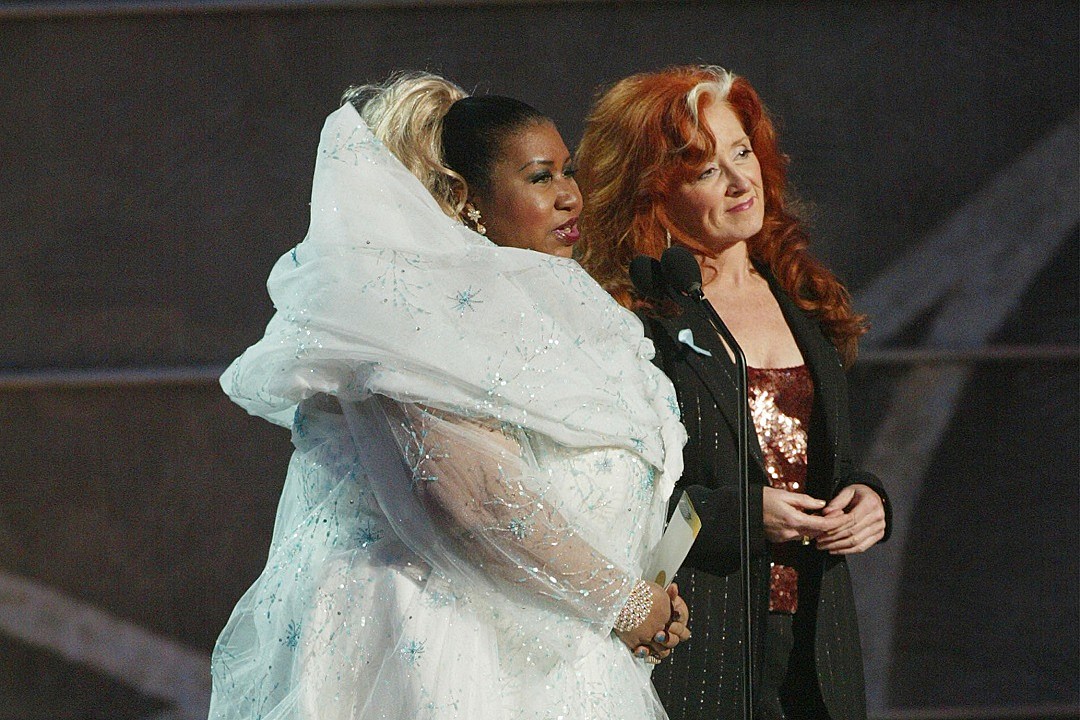

Bonnie Raitt on the Boston Common, 1971,
at the Vietnam Vets Against The War
Invité- Invité
 Re: DES GUITARES (et basses) ET DES FEMMES
Re: DES GUITARES (et basses) ET DES FEMMES
née au Canada, élève de Rufus Reid, Rodney Whitaker et Ron Carter, "le bassiste de Miles Davis", ayant accompagné Hank Jones, Harold Mabern, Wayne Shorter... née en 1980, elle ne s'est pas mise en quarantaine pour sortir son cinquième disque""She has the same lope or rhythmic pulse as my bassist, Ray Brown.
She is what we call serious."
Oscar Peterson
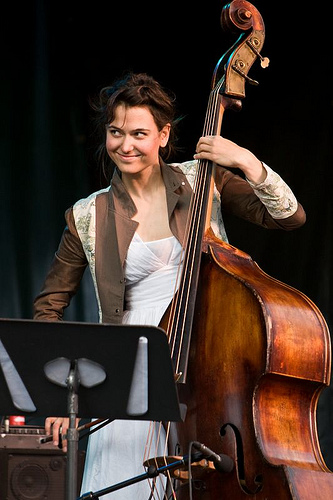
Brandi Disterheft to Release Fifth Album 'Surfboard'
Bass Magazine, Sept. 3 2020
Bass, Cello, Producer, Vocals: Brandi Disterheft
Tenor Saxophone: George Coleman
Piano: Klaus Mueller
Drums: Portinho
Composer: Antônio Carlos Jobim
Disterheft is joined by two iconic masters — virtuoso tenor saxophonist George Coleman and the definitive Brazilian drummer Portinho.
Bassist-composer-singer Brandi Disterheft’s fifth album, Surfboard is her most accomplished yet. Joined by two iconic octogenarian masters — virtuoso tenor saxophonist George Coleman and the definitive Brazilian drummer Portinho — and world-class pianist Klaus Mueller, Disterheft authoritatively and organically guides the flow on a varied program that reflects her capacious interests. Her kinetic, harmonically erudite basslines anchor ensemble interpretations of choice tunes culled from the blues, mainstem jazz, and the Great Brazilian and American Songbooks. She sings those Songbook numbers, and her own evocative lyrics, with an instantly recognizable voice that conveys vulnerability and emotional intelligence. And she matches the high bar set by her partners on a series of creative solos. Surfboard will be available worldwide on October 30, 2020 via Justin Time.
The project gestated in Disterheft’s decade-long musical relationship with Portinho, whom she met through Mueller soon after she moved to New York from Canada in 2010. Their simpatico developed during years as a working band, on numerous Canadian concerts led by Disterheft and Portinho’s five-sets-a-night weekend sinecure at a Brazilian churrascaria in Manhattan.
“I wanted to record us,” she says. “Porto has a way of uplifting the beat. It’s so funky, with such an infectious groove, and he has so much dynamic range. He has strict rules, but once you learn them, he wants you to break away. He’s always anticipating, turning around the phrases. It’s so much fun.”
Coleman plays characteristically compelling solos on the standards “My Foolish Heart” and “Speak Low” and the leader’s own evocative “Coup de Foudre.” Disterheft connected with him through his lifelong friend and bandstand partner, the late pianist Harold Mabern, who — with A-list New York drummer Joe Farnsworth — partnered with her on the hard-swinging 2016, CD, Blue Canvas, and several subsequent tours. Like Portinho, she remarks, Coleman “loves to keep people on their toes,” adding, “He’ll change harmony at the drop of a hat.”
Disterheft’s harmonic erudition, soulfulness and intense individualism come through when she sings the jazz standard “Where or When” and the 60s pop hit “On Broadway.” “It depicts the reality of New York, a hard run for some folks when one thin dime won’t even shine your shoes,” she comments on the latter tune. “I related to ‘they say I won’t last too long on Broadway; I’ll catch a Greyhound bus back home.’”
The Vancouver native has first-hand experience with overnight Greyhound buses, which Disterheft frequently rode to visit New York during a long residence in Toronto, where she attended Humber College and gigged with — among other luminaries — pianist David Virelles. “It puts the gutbucket in your playing,” Disterheft says. You hear her blend down-home grit and highbrow finesse on personalized interpretations of canonic pieces by bass heroes Oscar Pettiford (“The Pendulum at Falcon’s Lair”) and Sam Jones (“Del Sasser”), and in her propulsive beat articulation on two “obscure, wonderful Brazilian tunes” that Portinho brought to her attention — Moacir Santos’ “Nanã” and the polyrhythmic “Surfboard,” a less-traveled Jobim number that titles this superb, engaging album.
“It sounds like you’re trying to balance life on a surfboard,” Disterheft says of the latter. “The audience lights up as soon as you play it.”
Derived from liner notes by Ted Panken.
Blues for Nelson Mandela. Brandi Disterheft and Trio
Alex Minasian- Piano Dwayne "Cook" Broadnax- Drums
autres vidéos

Invité- Invité
 Re: DES GUITARES (et basses) ET DES FEMMES
Re: DES GUITARES (et basses) ET DES FEMMES
Mary Halvorson Quartet plays John Zorn’s Book of Angels
(Rotterdam, 1 September 2018)
Mary Halvorson & Miles Okazaki (guitars), Drew Gress (bass) & Tomas Fujiwara (drums)
je n'aime pas tout ce que fait Mary Halvorson, mais là je suis sous le charme, et le thème de John Zorn est très beau. Quant à Miles Okazaki, j'en suis un inconditionnel.After 13 years and 32 CDs Zorn’s expansive “Book of Angels” project is now complete! This final installment presents the last 10 unrecorded compositions from “Masada Book Two” and the variety, drama and lyricism is just as strong as the very first volume. Mary Halvorson, a longtime Masada fan and one of the most acclaimed guitarists of her generation, leads a dynamic quartet featuring Miles Okazaki, Drew Gress and Tomas Fujiwara. The music is intense, wild and incredibly varied—a beautiful and fitting conclusion to this historic Masada series—hailed as one of Zorn’s best!
Invité- Invité
 Re: DES GUITARES (et basses) ET DES FEMMES
Re: DES GUITARES (et basses) ET DES FEMMES
LA Theses
mon nouveau correspondant, alias Al Hall, me signale un article de novembre 2019Le jeu aux doigts semble faire beaucoup d'émules à Los Angeles chez les jeunes guitaristes qui montent, voir ici
MEET THE GUITAR SLINGERS TEARING UP THE SESSION SCENE IN LOS ANGELES
comme dit l'article, ce serait une "révolution tranquille", bien dans l'esprit de la West Coast pour ce qui est du peu de la tradition du jazz qu'on retrouve dans leur style, et menée, c'est comme ça, par des guitaristes blanc.he.s, toutes fureurs assagies dans le Smooth Jazz, avec des éléments de ce qu'on appelle le néo-soul, un peu une Beat Generation de salon
il m'a semblé que tous ces guitaristes jouent sur des cordes très fines, obtenant un son correspondant à leur esthétique générale, souvent passé à la moulinette des pédales d'effets. Une esthétique, on l'a compris, qui n'est pas ma tasse de thé
j'ai choisi d'en détacher deux femmes, une blonde et une brune, Arianna Powell et Molly Miller, la première au fingerpicking très développé, la seconde en technique hybride et un usage assez sommaire d'un ou deux doigts
elle revendique l'influence de Johnny Smith and Joe Pass
elle joue sans ongles, avec une position des doigts assez couchée attaquant les cordes en glissant,
façon luth comme le conseille Rob MacKillop
est-ce parce que Les hommes préfèrent les blondes,
j'oublierais Molly Miller
1963
la Pop américaine qui, déjà à l'époque, me laissait froid,
j'écoutais du blues, de la soul, du jazz
Invité- Invité
 Re: DES GUITARES (et basses) ET DES FEMMES
Re: DES GUITARES (et basses) ET DES FEMMES
JONI, JACO, CHARLES,
et les autres

Live London 1983
Soprano Saxophone: Wayne Shorter
Piano: Herbie Hancock
Bass Guitar: Jaco Pastorius
Guitar & Vocal: Joni Mitchell
Drums: Peter Erkskine
Congas Drums: Don Alias
Percussion: Emil Richards
Composer: Charles Mingus
Lyricist: Joni Mitchell
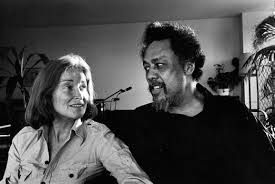
Wayne Shorter a écrit:As an artist and a poet and all that, there's no way to critique, to give a measurement to anyone who would be an adversary to the way in which she rendered her craft. And I would say that her craft spilled over the borders of what people and critics who would want to keep her in a controlled setting. You know what I mean?
Wayne Shorter on Joni Mitchell's jazz, June 18, 2013
Invité- Invité
 Re: DES GUITARES (et basses) ET DES FEMMES
Re: DES GUITARES (et basses) ET DES FEMMES
Oh Carol, don't let him steal your heart away

Carol Kaye is a pioneering bassist and guitarist who started in the West Coast jazz clubs
Women's History Month Interview:
Pioneering Bassist and Guitarist Carol Kaye
talks about Her Amazing Career in Music including Her Early Days in Jazz Clubs
autres vidéos
Legendary composer Quincy Jones is quoted as saying "Carol Kaye is the best bassist I've ever heard" and wrote in his book Q that "Some women jazz musicians were so great, they would leave the men in the dust with their playing."
One of those women is bassist and guitarist Carol Kaye who recorded more than 10-thousand record dates and film calls and was the top call on electric bass from 1964 to at least 1973.
Kaye is a pioneer in creating bass style and is recognized and endorsed as a lead in bass teaching for decades. She's still teaching on Skype as well as writing, producing, and publishing educational bass and guitars books and courses.
While there were as many as 400 working studio musicians in LA in the 1960's, Kaye was the only woman that was part of an elite group of 50-60 musicians that played on hit after hit on various music charts.
In interview with WBGO News Director Doug Doyle, Kaye stressed she was never intimidated by the men around her.
"I never thought of myself a women at all. I knew I was a woman because of the way men looked at me, but not as a guitar player. The guitar was my voice, so I used my guitar to play and make money with. I was born in '35 and my parents were not extremely poor, but there were times that we didn't have enough to eat. When you work on that basis it changes everything."
Carol Kaye was the only woman in an elite group of studio musicians making hit after hit in LA
Working day and night became routine for the talented musician. The long list of hit records Kaye played on included The Beach Boys' Good Vibrations, Barbra Streisand's The Way We Were, Glen Campbell's Wichita Lineman, Simon & Garfunkel's Scarborough Fair, Joe Cocker's Feelin' Alright, the Grass Roots' Midnight Confessions, and many more.
Kaye made her mark playing guitar in the jazz clubs on the West Coast. She started when she was 14.
"The genesis of real great music is in the black clubs. You had white clubs too, but the blacks came out to play with the whites and the whites went down to play with the blacks. It was all mixed up you know. So you can label it black or white. In the black parts of town, they had some nice clubs. People dressed up in suits and ties and beautiful dresses, hats and coats and all that stuff to go hear jazz. I carried my guitar in and they'd help with with my amp sometimes but they didn't have to, I could hold my own. Sometimes when I first worked in the clubs, they looked at me like 'oh, who is she, a cowgirl or something, or worse a folk singer?' As soon as I played some Bepop and some blues licks, then they knew that I could play when you get this (hand clapping), you now you're in. In the black parts of town, people never applauded you if you weren't good enough."
In 1957, while Kaye was playing in the clubs with the Teddy Edwards group, Little Richard's manager, "Bumps" Blackwell was impressed and offered her a studio gig playing with legendary singer Sam Cooke. Hoping to provide for her family, Kaye decided to take the record date which also featured Lou Rawls as the backup singer.
Bassist Carol Kaye used a pick to play her instrumentI've always used medium-gauge flatwound strings* since I play exclusively with a hard pick (with a flat wrist, not like guitar players). Most of the 1960s hits out of Hollywood were cut on flatwound strings by bass players who played with a pick. And I always use a doubled up piece of felt muting on top of the strings just over the bridges to dampen the over- and under-tones for a cleaner recorded sound too (good for live work also). If you play with fingers and maybe sometimes with a pick, I'd advise to use only the foam underneath the strings barely touching the strings for this sort of muting of unneeded extra-tones. Strings still ring if the muting is done correctly.
source
* Thomastik-Infeld JF344 Gauge: 43-56-70-100
Famous for creating bass styles, Carol Kaye became the top call in for studio work
Eventually, Kaye moved to bass in 1963 when another studio musician failed to show up for session. Before you knew it, Kay would become the number one call for electric bass. By using a pick, she was able to create and invent bass lines that brought smiles to those in charges of the recordings.
"Everybody played bass with a pick. Nobody played with fingers back then. It was easy. I always played with a hard pick. The technique I used was a flat wrist technique. The minute you raise your wrist like that with the bass, you've lost your power. It's just something that I could automatically do. Then they would hire me and they didn't need three bass players. I knew I had something they needed. I was the top dog back then."
Never losing her love for jazz, Kaye recalled how she really enjoyed working with Marian McPartland and Melba Liston at the 1979 Women's jazz Festival. Kaye's admiration for today's female jazz players was obvious. She likes performers like Terri Lynne Carrington, Toshiko Akiyoshi and Esperanza Spalding.
"They're taking the integrity of the early days. They've got that integrity to them. They're not buying into the ego of things. The ego thing started happening with the stage bands of the '70's because the magazines made stars out of everybody. Musicians were not known as stars. We were respected yes, but we weren't stars. You had movie stars crafted to be stars."
John Meza
Carol Kaye is also a recognized leader in bass and guitar teaching
Carole Kaye's enormous list of TV and film credits is impressive. Some of the television shows she recorded on were the 1st Bill Cosby Show, Kojak, MASH, Ironside, Room 222, Hawaii Five-0, Mission Impossible, Brady Bunch, Cannon, Streets of San Francisco, Hogan's Heroes, Soap, Wonder Woman, Lost in Space, Barnaby Jones, Green Acres and Get Smart.
Her hundreds of movie scores included Airport, On Any Sunday, Butch Cassidy & The Sundance Kid, In The Heat of The Night, Top Gun, Ghost, In Cold Blood, Goodfellas, Downhill Racer, Duel, Bullitt and Escape From the Planet of the Apes.
"In movie work you could almost fall asleep the music was so easy to play and read. There was one sax player Bud Shank, great, great sax player. He used to read the Sailboat Magazine at the same time he was record a sax part. Most of the time in movies, you just look at the cue and record it. In other words you never rehearse it."
Kaye did enjoy working with some of the finest composers like Henry Mancini, Quincy Jones, Michel Legrande and Lalo Schifrin.
"You felt like you were finally doing what you wanted to do."
Invité- Invité
 Re: DES GUITARES (et basses) ET DES FEMMES
Re: DES GUITARES (et basses) ET DES FEMMES
elle n'utilise les cordes graves qu'à vide (Open Strings), mais bon, avec le mérite de faire sonner toute la tessiture de ce magnifique instrument, certes avec une prise de son en studio un rien décalée dans le paysage
« My tuning is dependent on the key and differs from piece to piece, as you've hopefully understood. The G minor tuning I show in this video is: D Bb G D A G D C A G. Narciso Yepes's tuning: E B G D A E D C G# F# (g# and f# are higher than 8th C. So, 8th string is the lowest in Yepes's decacorde tuning) »
Russian born guitarist Marina Krupkina has been forging a new path within the world of classical guitar. She brings with her a stylish approach and an air of cool while carving out her own very unique sound. Marina has made arrangements of monumental works like Beethoven’s 7th Symphony, she improvises around themes by Vivaldi, and composes her own music which makes use of interesting harmonies, rhythms, grooves, and extended techniques like percussive tapping and harmonics.
Marina has two full length albums to her credit, a large catalog of finely produced YouTube videos that not only showcase her talent for playing, but for composing, recording and producing as well. She works extremely closely with the esteemed classical guitar composer Nikita Koshkin, re-envisioning many of his works, and whether you’re following her on Instagram, Facebook, or YouTube, Marina has been bringing much deserved attention to the decacorde and showing the world just what 10-strings can do.
Marina recently sat down with us to discuss how she found the decacorde, what a day in the life is like for her, what it is like to work so close with Nikita Koshkin, her eclectic influences, recording, and more.
Brad: How would you describe your musical style?
Marina: I see my musical style as a mix of classical guitar tradition, classical music tradition, and my many rock music influences. Even though on occasion I don’t like to admit it, but after studying it so intensely for most of my life, the classical guitar, its technique, and its music have become very important to me, and especially in the past ten years. Classical music really does mean the most to me, it is the most expressive and challenging music for me to study, and I truly do love it more than any other style. I've spent roughly three years of my life playing the electric guitar before I switched focus to the bass, and this has definitely influenced my approach and sound. In recent years I have been listening to finger-style guitarists who in a way have been re-imagining the instrument, and who have been doing some really interesting things that I like to borrow from as well. There are so many ways to approach this instrument while still respecting the long traditions of the past, and there is a whole world of ideas and possibilities that are just too hard to ignore.
Brad: How did you transition from playing the classical guitar in your younger years, to the bass, then back to playing the classical guitar, and then to finally settling on the decacorde?
Marina: The real story is quite complicated, but before playing bass guitar, I finished primary music school as a classical guitarist, but I did not practice enough. Maybe because I was too young to understand how much work goes into this, and partly because as a teenager I really wanted to play and compose rock music. I saved up all of my money to buy an electric guitar, and after one year of playing I was invited to join the most famous rock band in our city, not as a guitarist, but as the bass player. It was by coincidence that I became a bass guitarist, and I totally fell in love with it; the low sounds, the firm rhythms, grooves, and I just felt that this was more my cup of tea.
I played for two years with this band, but began to understand that to develop my own style, and compose my own music I needed to continue my formal classical music education and turned my focus back to the classical guitar.
I practiced like crazy during college, partly because I felt like I had missed out on so much while I was gone, also because it is such a competitive field, and there is just something about the instrument that keeps me going after it.
After college I entered the Maimonide's Music Academy in Moscow to further my studies, and also because I really wanted to become a student of Nikita Koshkin. It was such an honor for me because Koshkin was serious about me coming to study with him after hearing me play too.
After the first year of studying with Koshkin, he let me use his decacorde to play Mertz's Fantasia so that I could make use of the original basses that exist in his writing for the 10-string guitar, and this is how my decacorde journey began.
Brad: Take us through a day in the life of Marina Krupkina.
Marina: There are three variants for me in the way that I spend my days. The first is my favorite; I wake up, do the morning routine – eating and taking a shower, and after that I practice or compose almost all day long. I obviously take a few breaks to drink coffee, talk briefly on the phone, or check my social media, but the day usually comes to the end with me playing until midnight, and then I will unwind and relax in bed reading until I fall asleep.
The second variant is “recording day.” I will record something, then begin the editing, mixing and mastering of the tracks and videos too. This can be a very tedious and frustrating process which usually takes up an entire day. Once I commit to a recording day, I won’t stop until the complete process is finished.
The 3rd variant is my least favorite of the three. It is the day that I go and make money by teaching at the music school. I sometimes teach students for 6-9 hours, and after that if I have any more energy I will come home and try to practice for a few hours.
Brad: What was the first Koshkin piece that inspired your interest in his music?
Marina: The first Koshkin's piece I played was Three Stations on one Road. I was a student in college and my teacher gave me the score and I was immediately interested in his music after this.
I then began to listen to other pieces composed by him, and around this time I also really liked his Prelude and Fugue in F Minor from his famous cycle 24 preludes and fugues for guitar.
Brad: What is it about his music that you connect with so well?
Marina: I think it is the strict sense of rhythm, and his very special Koshkin-style harmony. For me Koshkin's music is exquisite, and very emotional. Often his music can be dark, assertive, or fervently mocking, but the emotion is always strong, and there is just so much that I like about it.
Brad: What is the hardest thing, and the best thing about being so close to an esteemed composer like Koshkin?
Marina: Nikita Koshkin is really a very nice and caring person. He was kind enough and firm enough to help me realize that my dream of becoming a concert classical guitarist wasn’t my true path. He really encouraged me to find my own voice and to push myself more as a composer. I first showed him my music after about four years of communication and friendship. Up until this point I was just too shy to share with him what I was writing at the time. I know it sounds funny but he encouraged me to stop taking part in competitions and to begin concentrating on my talent as a composer. This was a very important step in my development and career.
Another great aspect of being so close with him is that I get to observe his composing process, from the first chord all the way to the last chord, and with all of the little finishing touches along the way.
The hardest thing for me is when I hear people often say as a compliment; Wow, your new piece is so good, I feel Koshkin's music influence! Even though this is usually meant to be a compliment, I always compose as I like and feel. I am walking my own composing path, and I can feel discouraged or even depressed when someone assumes that I am just copying or trying to become the” Second Koshkin.”
Brad: Your original music has so many influences in it, what are some of the artists you are currently listening to?
Marina: Ooh, right now I am listening to; Primus, The Omnific, Mr. Bungle, Beethoven, Gesualdo, Monteverdi, Vivaldi, Manhattan Transfer, Aphex Twin, Alexandr Misko, Orlando Di Lasso, Mozart, and on and on.
Brad: Who are some of the guitarists that have helped inspire your personal style?
Marina: There are just so many guitarists who have inspired me, but a few names are Artyom Dervoed, Lorenzo Micheli, Thomas Viloteau, Gabriel Bianco, Jon Gomm, Tommy Emmanuel, Les Claypool (he's not a guitarist, but he's my huge inspiration), Nikita Koshkin, and also a young talent Marcin Petrzalek has greatly inspired me within last couple of months.
Brad: Is the classical guitar a lonely instrument, does it leave much room for a social life?
Marina: I see my friends 2-3 times a year. They call me a “ghost” if that answers your question!
Brad: Tell us about your latest album; Decacorde Stories?
Marina: In this album I try to show different sides of the decacorde, and the many different techniques that I have been exploring. The album includes five original compositions, my arrangement of Nikita Koshkin's, Sonata for guitar and piano (after my arrangement it's become, Chamber Sonata) and my Beethoven 7th Symphony arrangement. The special thing about this album is that I not only composed and performed, but also recorded, edited, mixed and mastered by myself as well.
Brad: The Beethoven transcription sounds like a real handful, was there a time during the process that you thought it was impossible?
Marina: Honestly, I was always sure that it was possible, because I believe in the decacorde, even though other people were skeptical when I was beginning to work on the arrangement, I just kept moving it forward.
Brad: What is the process of composing a new piece, do you score your pieces out, and are there editions available yet?
Marina: It's different for every piece. Sometimes the piece just comes right out of me, like Rainbow Bridge Trip. I composed it within one day while being filled with the strong emotions of a friend passing away. Other times I just catch a few ideas and then work on developing them over time, but a common theme is that I am always trying to innovate something new into the decacorde vernacular, and trying to make each piece an important step forward in the decacorde repertoire development.
I do have scores for my music, but they aren’t published yet.
Brad: What do you plan to accomplish over the next five years?
Marina: I really don't think that far ahead because life always brings little surprises for you. Five years ago, I would never have imagined that I would become a decacorde composer and player, and that I will have two albums released. So, I'm going to continue composing and making my music better, and the only real plan is to have many more concerts.
Invité- Invité
 Re: DES GUITARES (et basses) ET DES FEMMES
Re: DES GUITARES (et basses) ET DES FEMMES
dans la famille Yamashita, donnez-moi la Reine
douceur et dynamique, fluidité, touché, contrôle du timbre, profondeur rare
variété des positions et attaques de main droite
port de la guitare haut, la joue parfois collée sur l'éclisse
Kanahi Yamashita was born in Nagasaki in 1997. From early childhood she toured the USA, Europe and Asia with the Kazuhito Yamashita Family Quintet, who released two CDs, Kasane and Little Henny Penny finds love. At the age of 13 she gave her solo debut during a series of worldwide duo concerts with her father.
Since 2015 she has lived in Berlin, where she studies guitar with Professor Thomas Müller-Pering at the University of the Arts and also studies vocal pedagogy. She regularly gives solo and chamber music concerts, including in the great hall of the Konzerthaus Berlin, and is invited as a soloist to international festivals.
From 2016 Kanahi received a scholarship from the Yamaha Music Foundation, and from 2020 from the Rohm Music Foundation. She was a semi-finalist at the 66th ARD Music Competition in Munich in 2017. She has won various competitions, including the German Guitar Prize 2019 in Darmstadt.
Invité- Invité
 Re: DES GUITARES (et basses) ET DES FEMMES
Re: DES GUITARES (et basses) ET DES FEMMES
transmis par @Kevin_Eubanks
2021
1960
Tenor Saxophone: John Coltrane
Piano: Tommy Flanagan
Upright Bass: Paul Chambers
Drums: Art Taylor
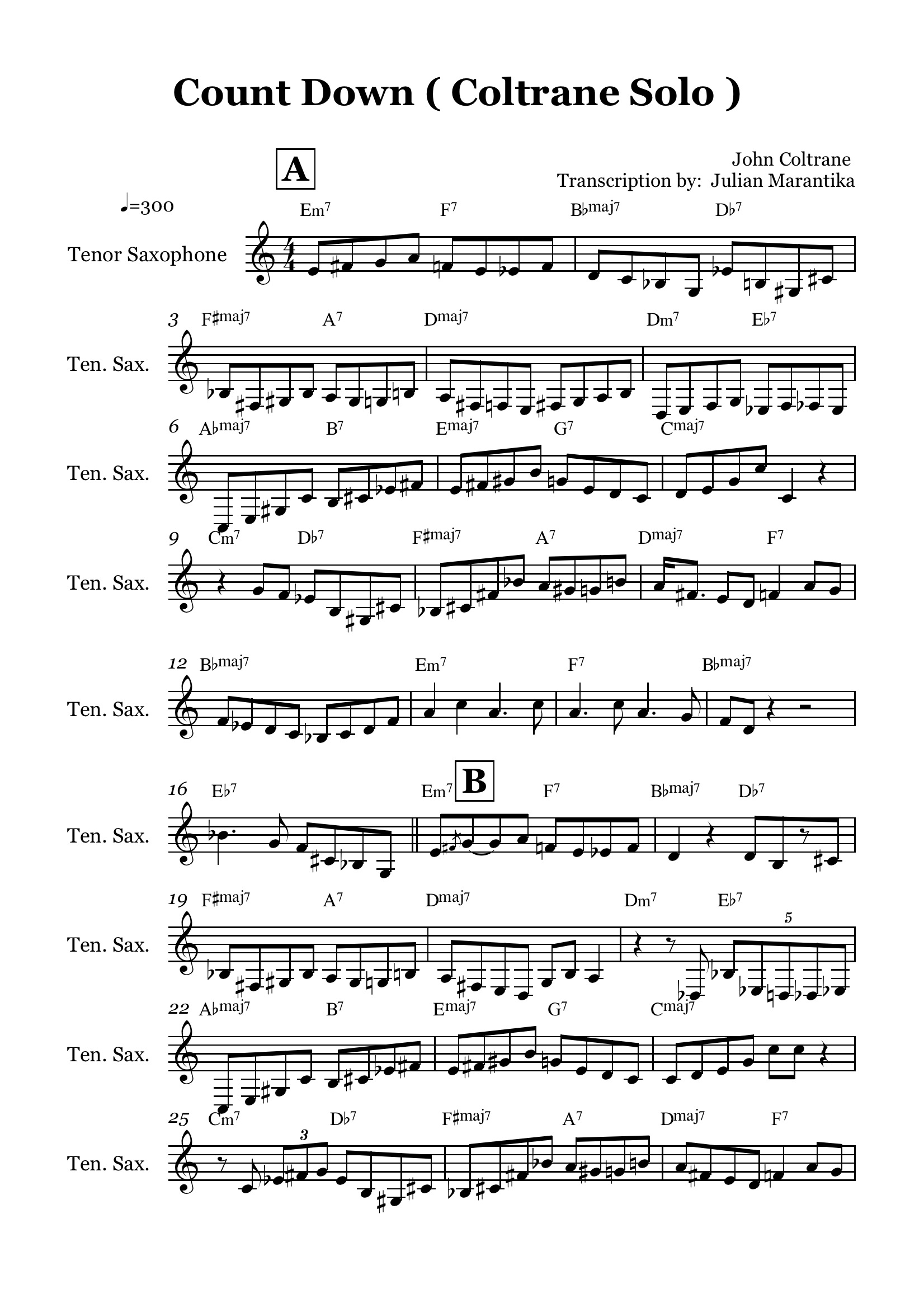
la suite
analyse, extrait
2021
1960
Tenor Saxophone: John Coltrane
Piano: Tommy Flanagan
Upright Bass: Paul Chambers
Drums: Art Taylor

la suite
analyse, extrait
"Countdown" est un standard très difficile de John Coltrane joué à un tempo d'enfer ! C'est un standard polytonal comme "Giant Steps", avec ici une tonalité de départ et d'arrivée (Sib majeur), mais c'est bien l'enchainement "mathématique" de tonalités majeures qui caractérise ce standard. John Coltrane est parti de la division de l'octave en 3 parties égales. Cette technique a été développée par Nicolas Slonimsky dans son livre "Thesaurus Of Scales And Melodic Patterns", livre de chevet de nombreux musiciens...
Notez que chaque mesure 1, 5, 9, 13 démarre par un accord m7 qui monte chromatiquement sur la cadence V-I qui suit, ce qui complète l'approche mathématique systématique de ce standard.
Invité- Invité
 Re: DES GUITARES (et basses) ET DES FEMMES
Re: DES GUITARES (et basses) ET DES FEMMES
j'ajoute à ce choix du 9 août une vidéo mise en ligne le 14 août, des pièces très classiques jouées sur différentes guitares. Il ne faudrait pas me pousser beaucoup pour dire que Kanahi Yamashita est ma (mon ?) guitariste classique préférée : beauté des timbres, dynamique, et même, osons-le, ici ou là, swing
UN AIR DE FAMILLE
2008 ?
John Dowland, Alexandre Tansman, Mario Castelnuovo-Tedesco
Sergei Rudnev, Frank Martin
UN AIR DE FAMILLE
2008 ?
John Dowland, Alexandre Tansman, Mario Castelnuovo-Tedesco
Sergei Rudnev, Frank Martin
il y a chez Kanahi Yamashita une attention au son exceptionnelle, sans doute plus soignée que chez son père, mais comme chez lui, toute l'économie de positions, de mouvements et de gestes se comprend comme visant cette qualité sonore. Il y a aussi chez elle une capacité à faire sonner la guitare classique dans une infinie variation de timbres, un véritable vocabulaire de cet instrument considéré sous cet angle (elle hérite aussi de Segovia) ; écouter à cet égard les Quatre pièces brèves pour la Guitare de Frank Martin. J'y reviendrai. De quoi renforcer ma conviction que toute guitare, même électrique, devrait d'abord s'approcher de façon acoustique, de façon à en tirer tous les possibles sonores avant toute amplification
m'impressionne le travail de sa main droite bien plus que celui de sa gauche, pour moi beaucoup plus abordable techniquement
Troguble- Messages : 101
Date d'inscription : 31/07/2021
 Re: DES GUITARES (et basses) ET DES FEMMES
Re: DES GUITARES (et basses) ET DES FEMMES
LE TEMPS EST VENU
Joanne Shaw Taylor a grandi dans la région de Birmingham en Angleterre, et commence dès son plus jeune âge à jouer du blues, inspirée par Stevie Ray Vaughan, Albert Collins et Jimi Hendrix
Troguble- Messages : 101
Date d'inscription : 31/07/2021
 Sujets similaires
Sujets similaires» III. LA BASSE et LES BASSES À LA GUITARE 8 CORDES
» GUITARES SUR CHEMINS NON TRACÉS
» LUTTES DE FEMMES
» I 2. TECHNIQUES et MUSIQUES pour guitares 6, 7 et 8 cordes, IMPRO etc.
» LA DOMINATION ÉCONOMIQUE DES FEMMES
» GUITARES SUR CHEMINS NON TRACÉS
» LUTTES DE FEMMES
» I 2. TECHNIQUES et MUSIQUES pour guitares 6, 7 et 8 cordes, IMPRO etc.
» LA DOMINATION ÉCONOMIQUE DES FEMMES
Page 1 sur 1
Permission de ce forum:
Vous ne pouvez pas répondre aux sujets dans ce forum


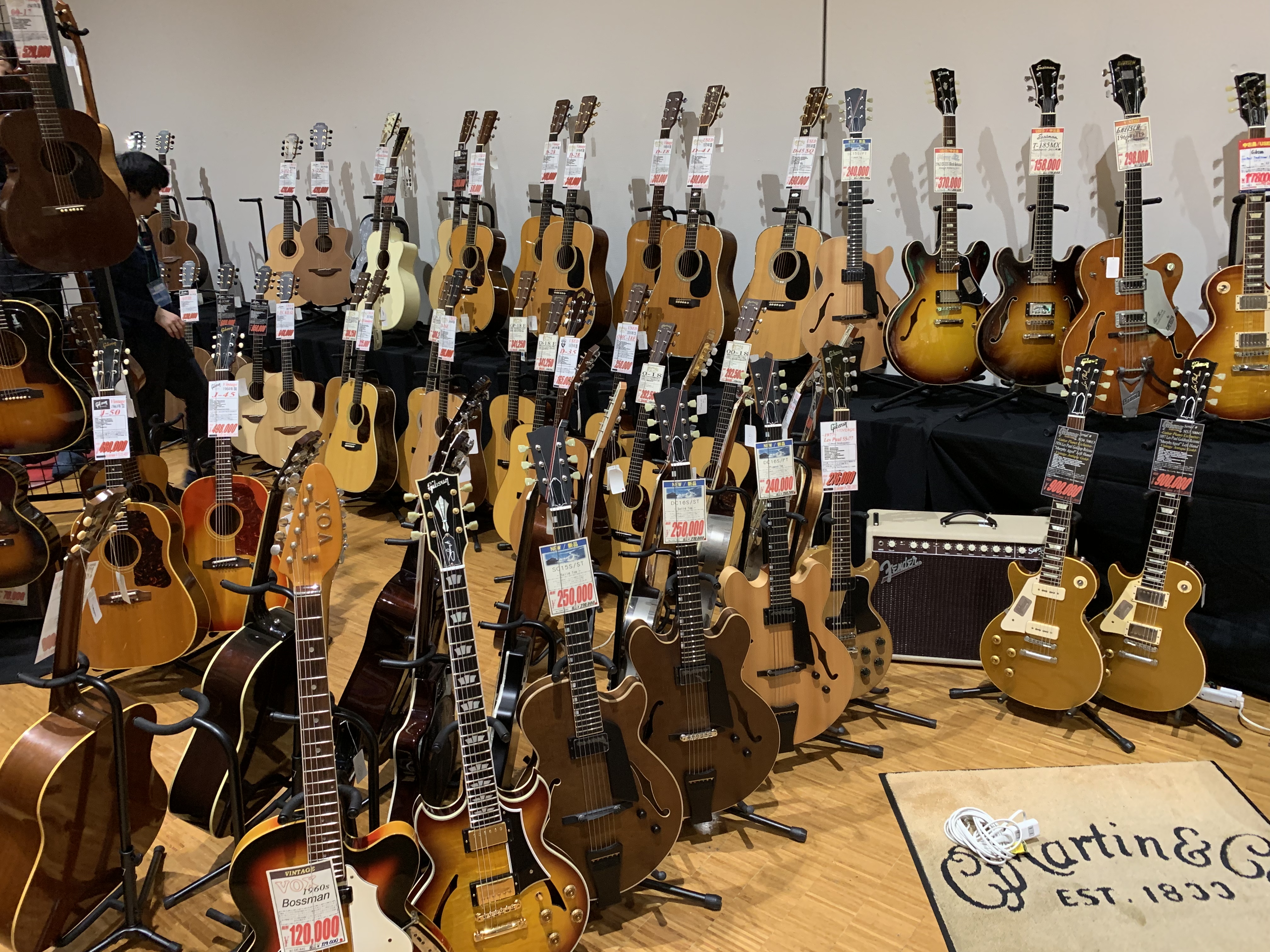
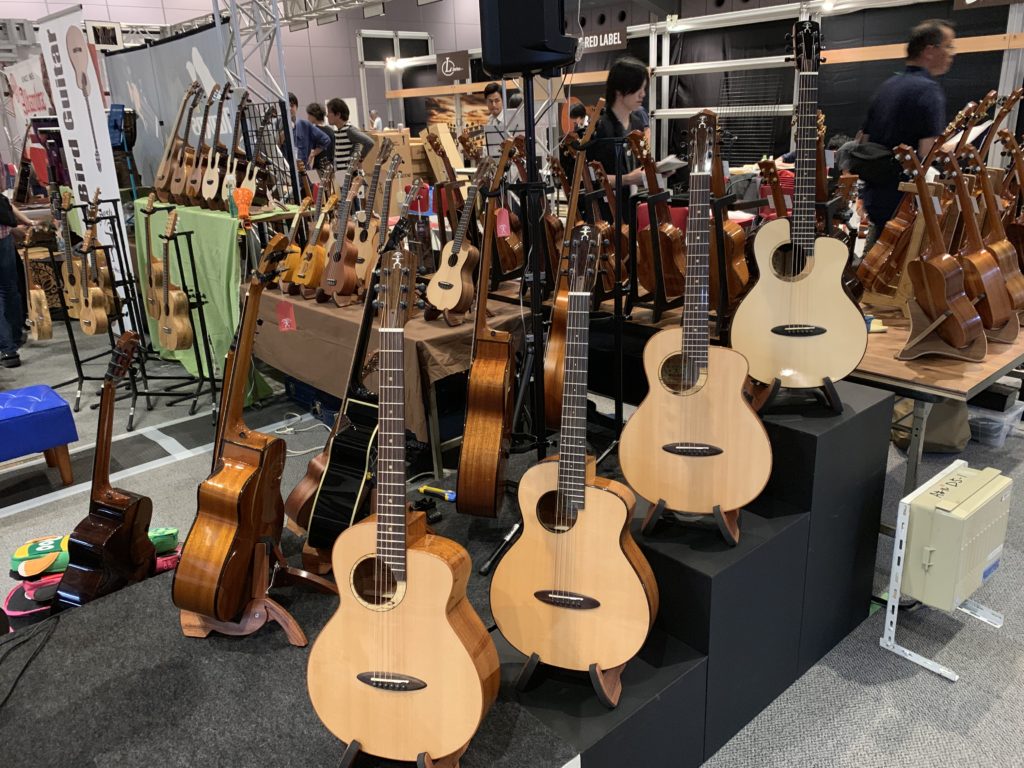
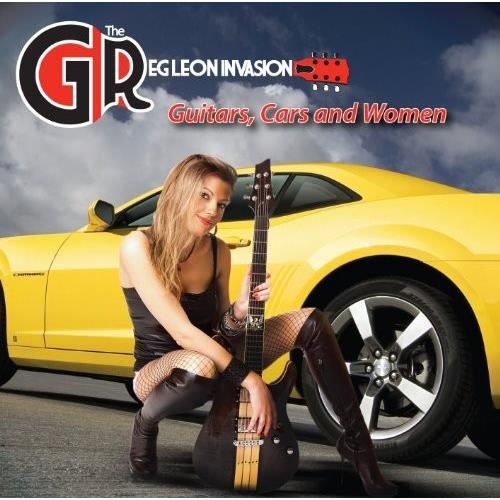



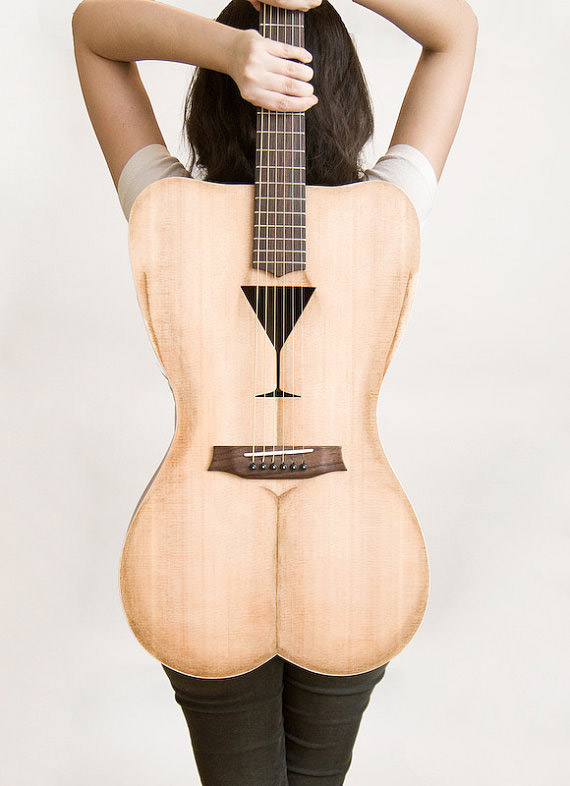

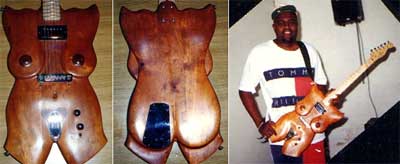


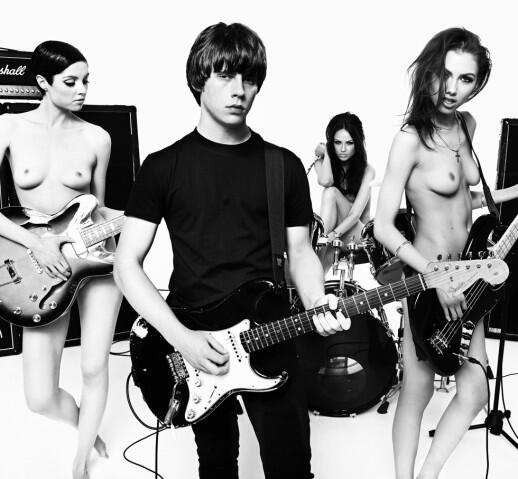



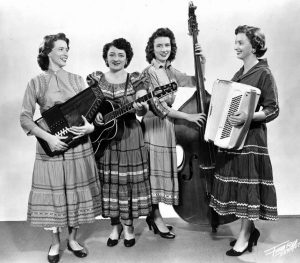





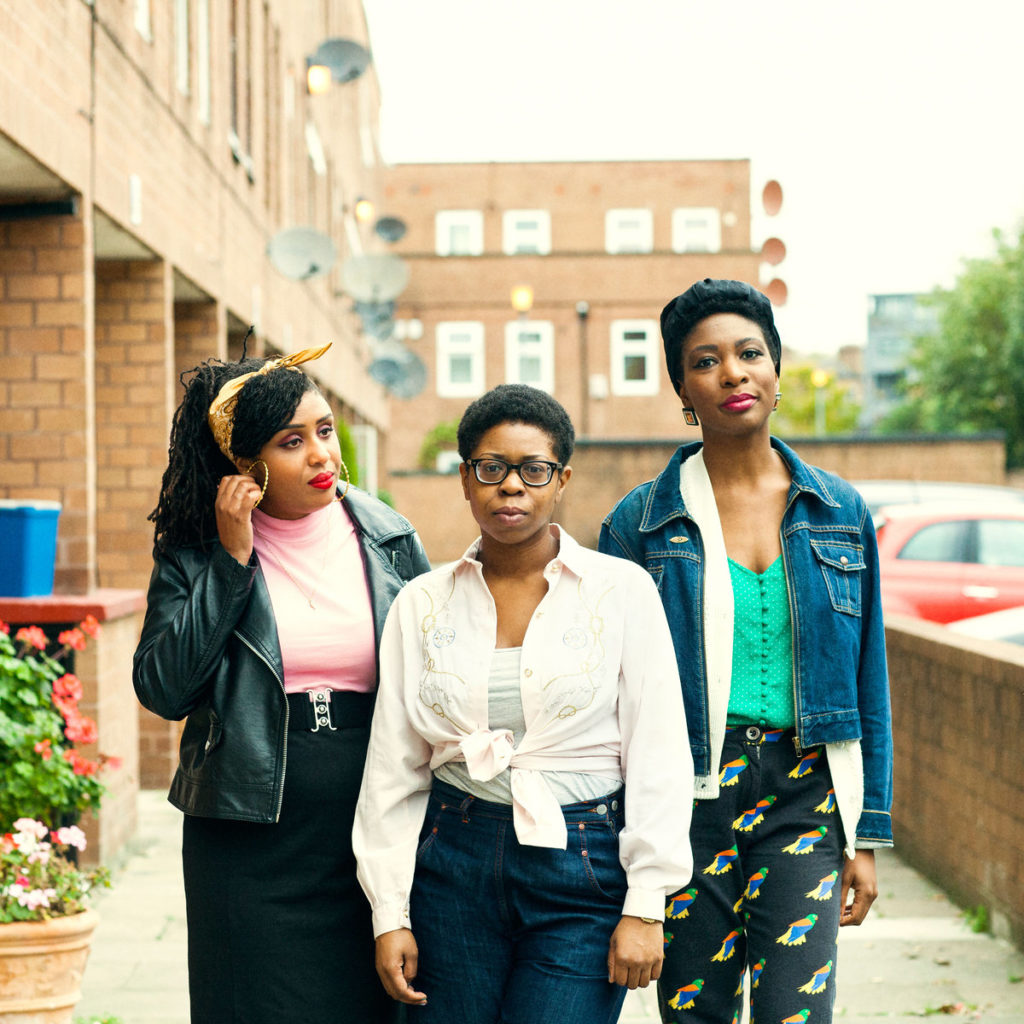



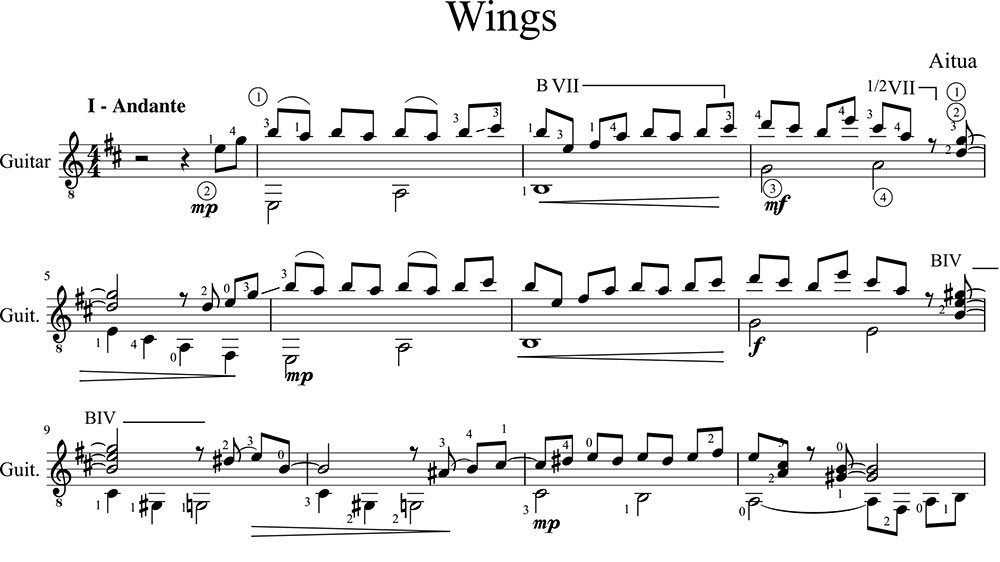
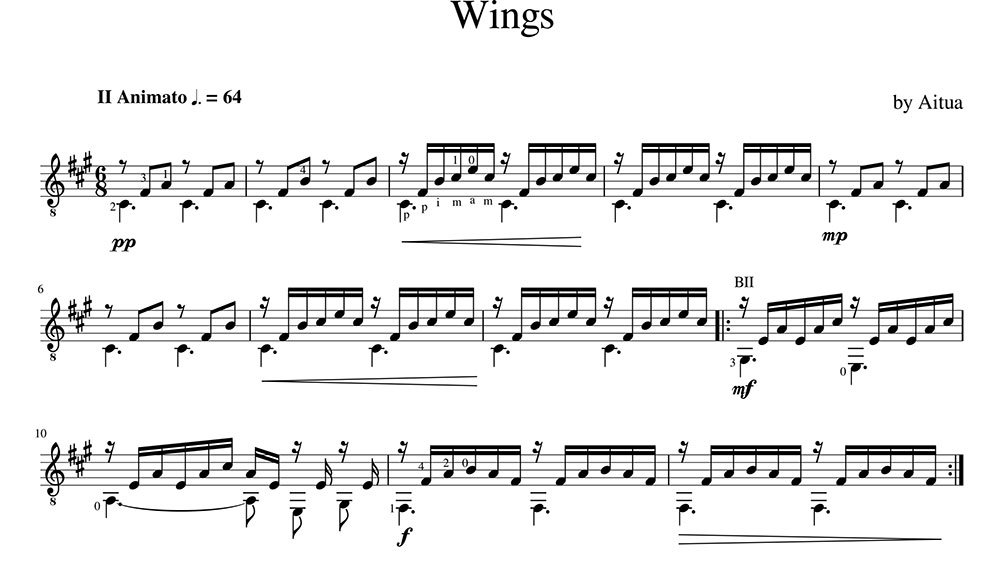
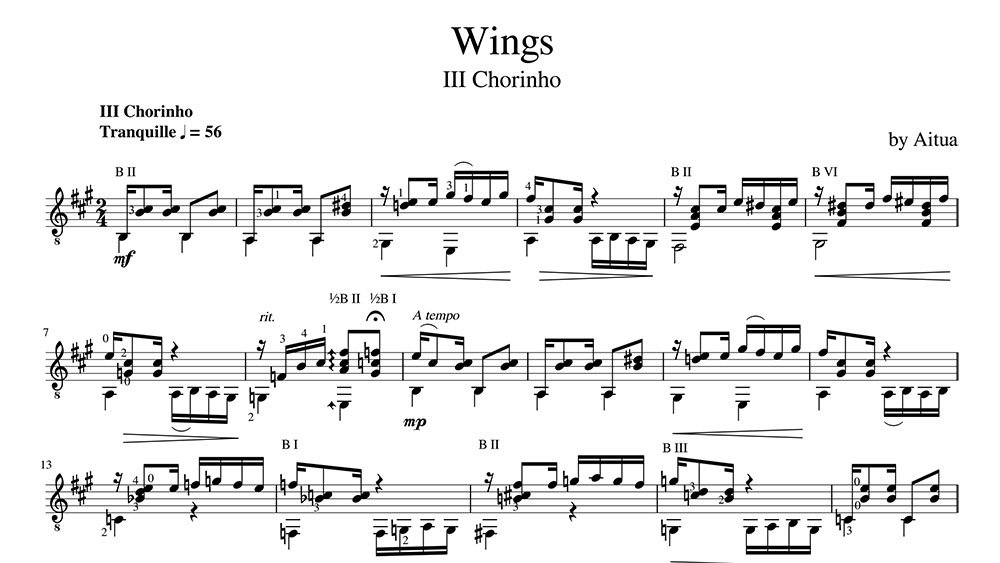

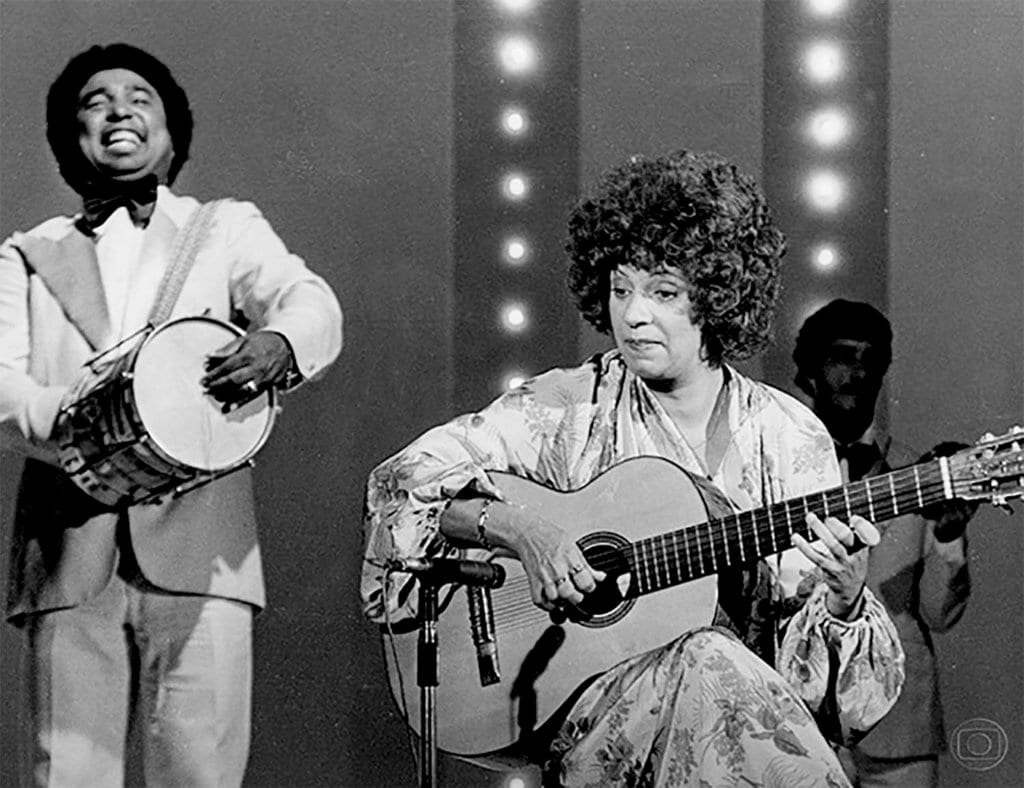
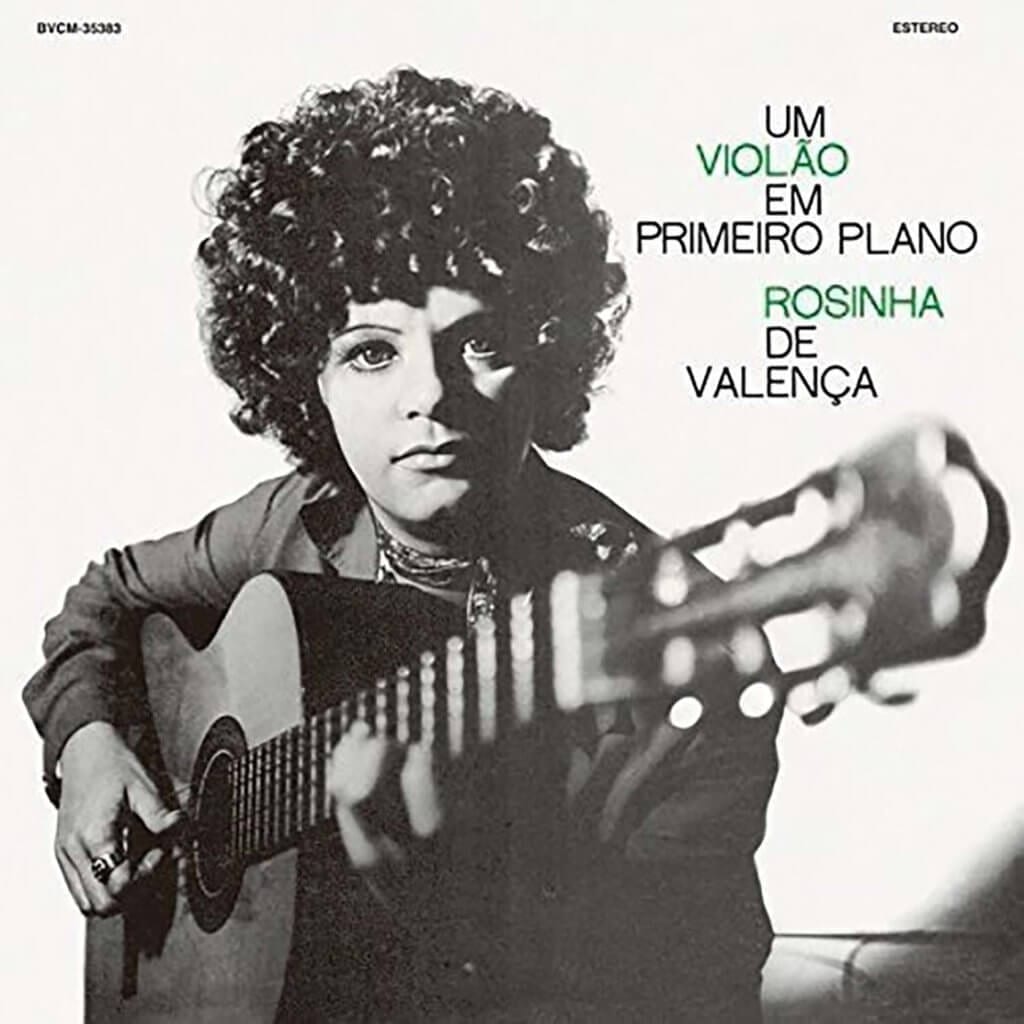
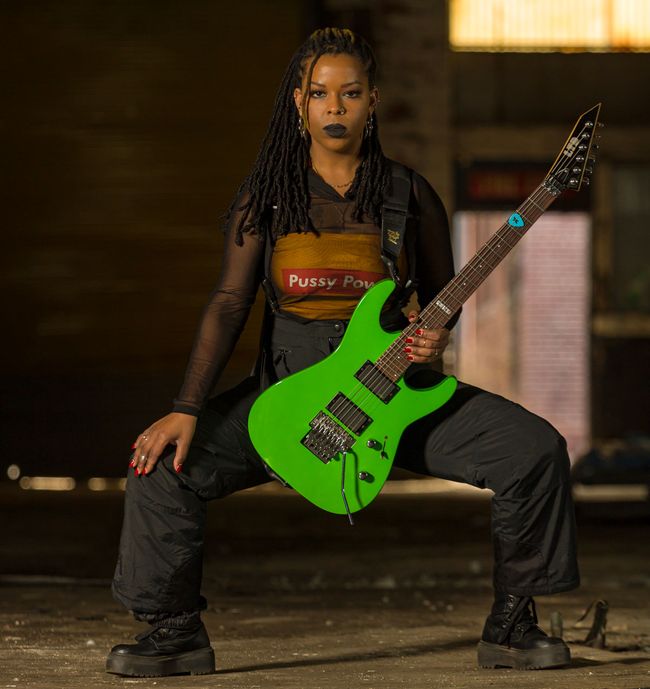
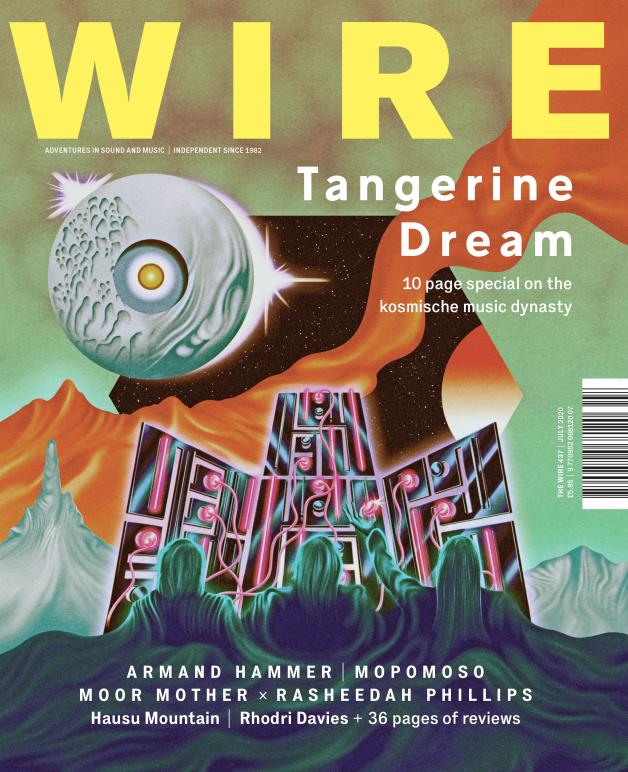
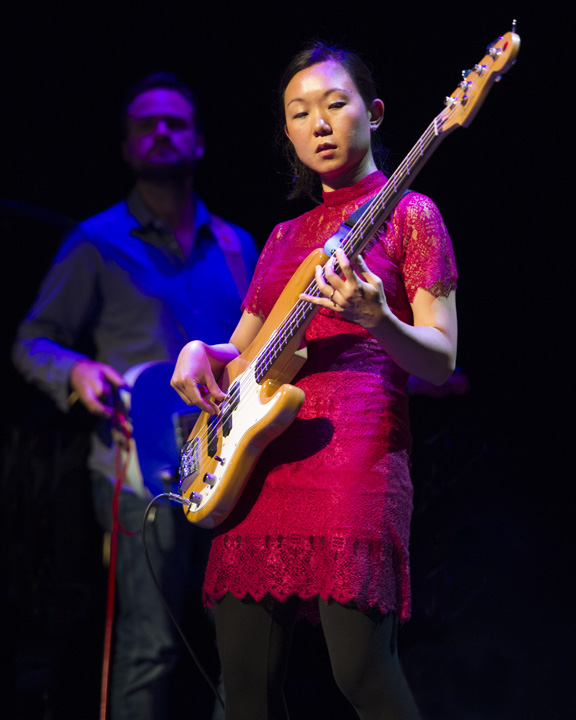

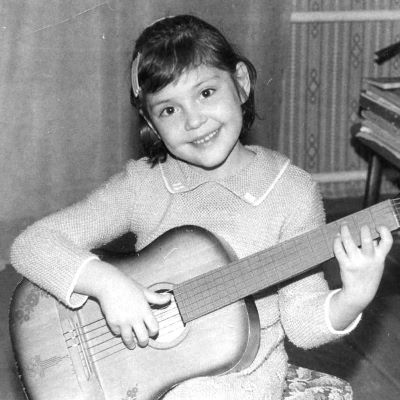
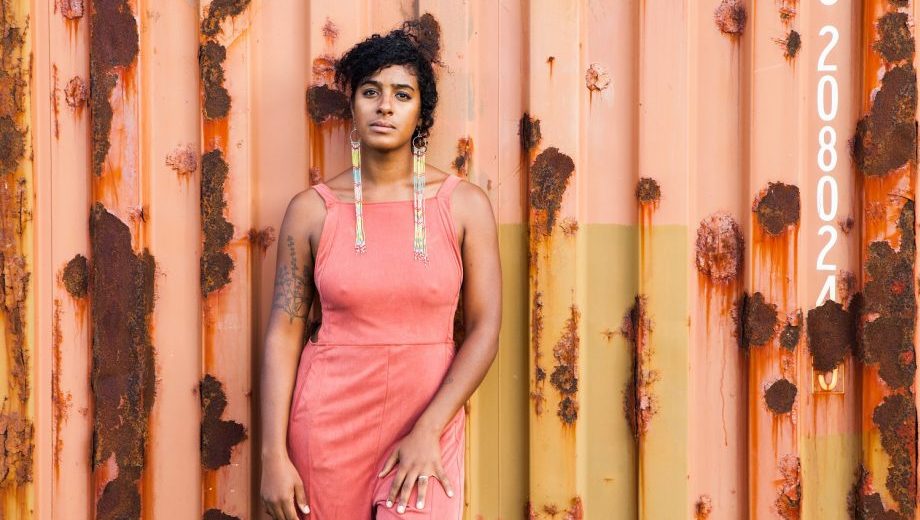


:format(jpeg):mode_rgb():quality(40)/discogs-images/R-7616583-1445320295-3334.jpeg.jpg)



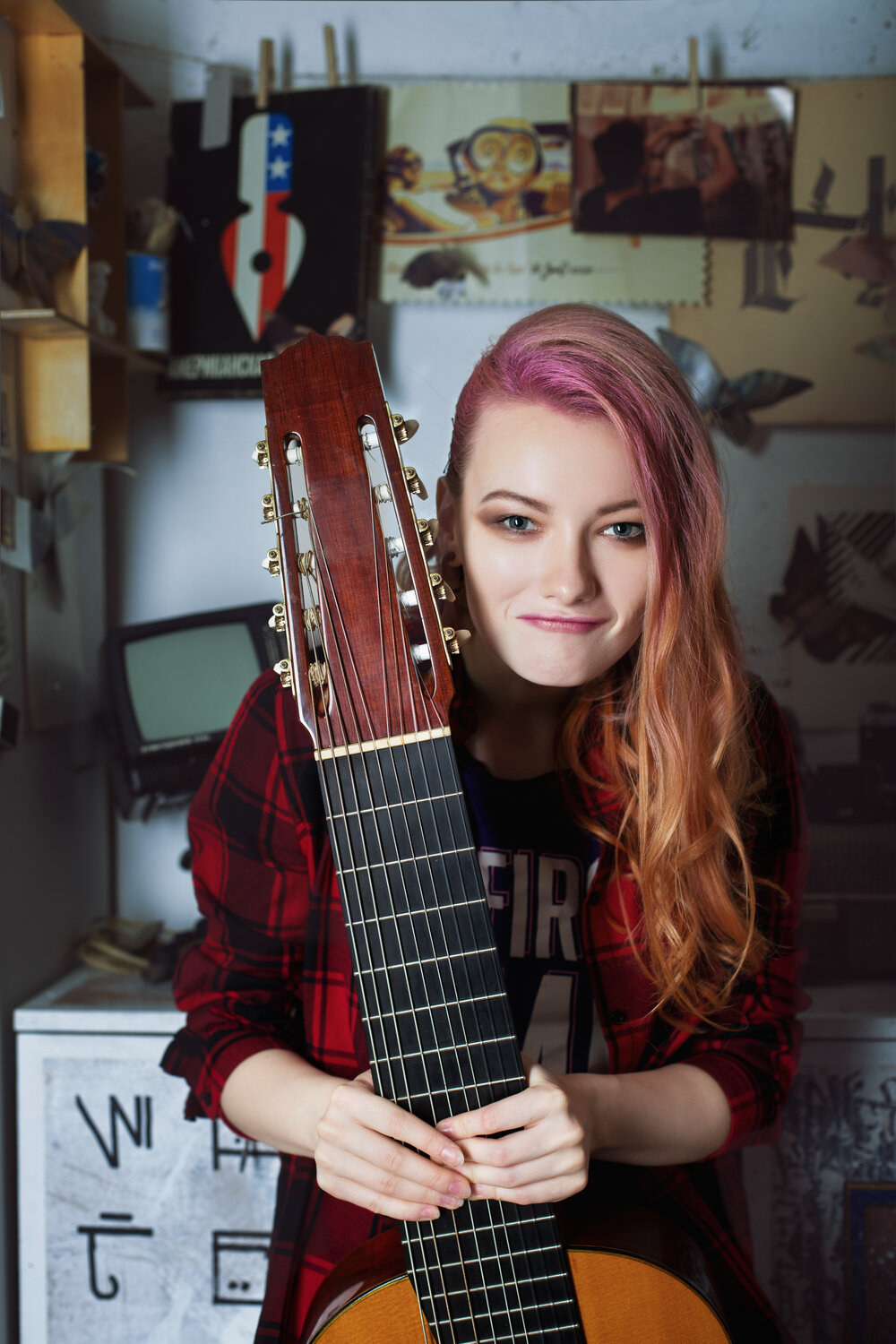
» BIEN CREUSÉ, VIEUX TOP ! Histoires d'une mare
» IRONÈMES, poésie minimaliste, depuis 2018
» MATIÈRES À PENSER
» CRITIQUE DE L'UTOPIE, DES UTOPIES, communistes ou non
» I 2. TECHNIQUES et MUSIQUES pour guitares 6, 7 et 8 cordes, IMPRO etc.
» ET MAINTENANT, LA POLITIQUE RESTRUCTURÉE EN MARCHE
» PETITES HISTWEETOIRES IMPRÉVISÉES
» HOMONÈMES, du même au pas pareil
» LA PAROLE EST À LA DÉFONCE
» KARL MARX : BONNES FEUILLES... BONNES LECTURES ?
» IV. COMBINATOIRE et PERMUTATIONS (tous instruments)
» CLOWNS et CLONES des ARRIÈRE- et AVANT-GARDES
» VI. À LA RECHERCHE DU SON PERDU, ingrédients
» CAMATTE ET MOI
» III. LA BASSE et LES BASSES À LA GUITARE 8 CORDES
» L'ACHRONIQUE À CÔTÉ
» LA CRISE QUI VIENT
» MUSIQUE et RAPPORTS SOCIAUX
» PETITE PHILOSOPHIE PAR LA GUITARE à l'usage de toutes générations, classes, races, sexes...